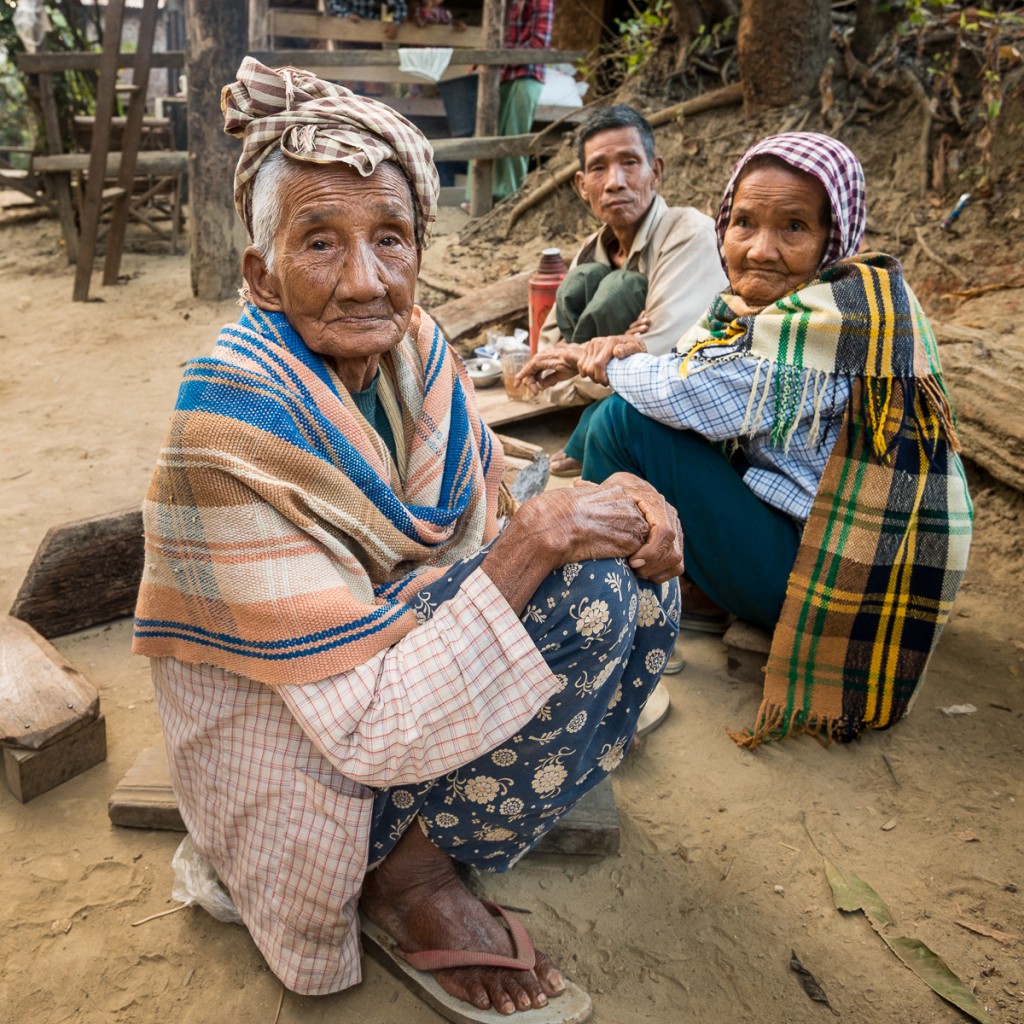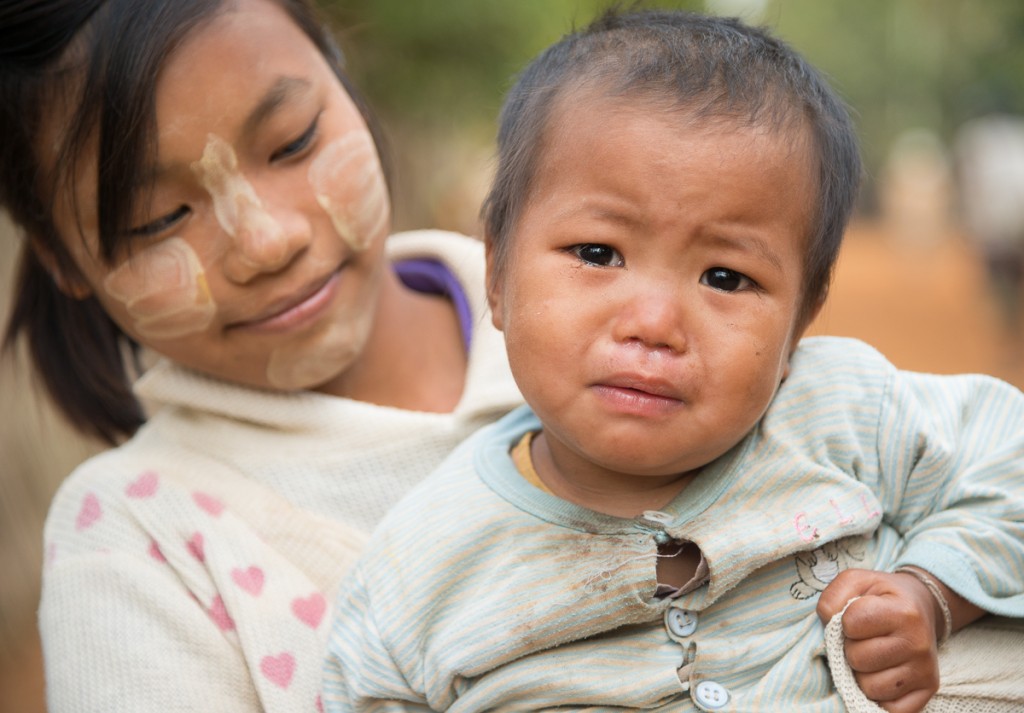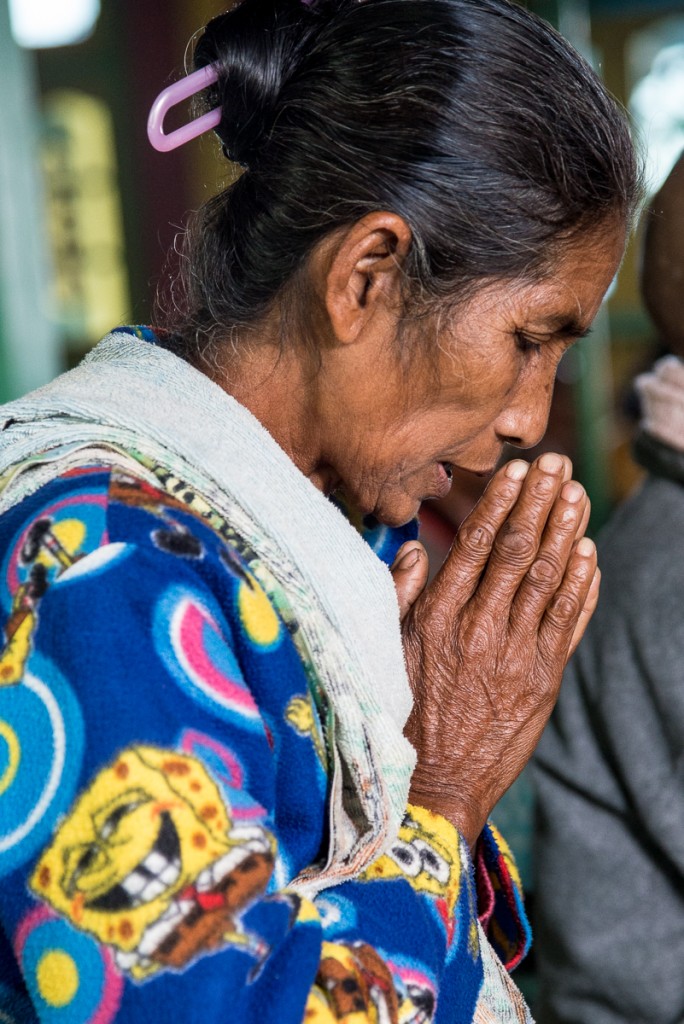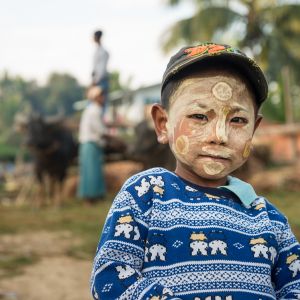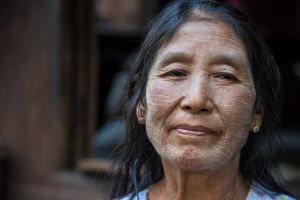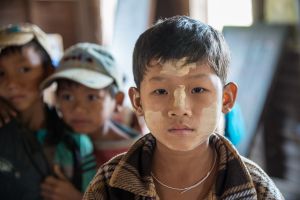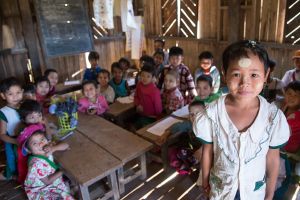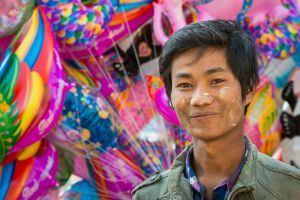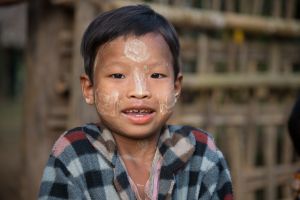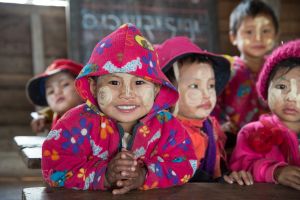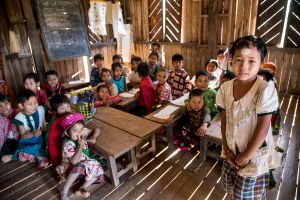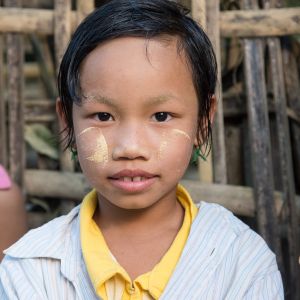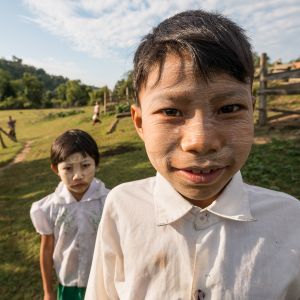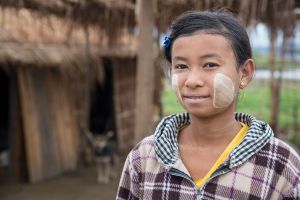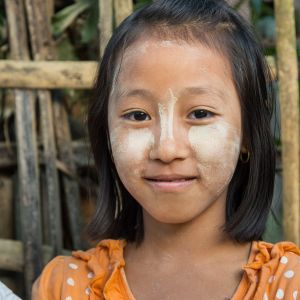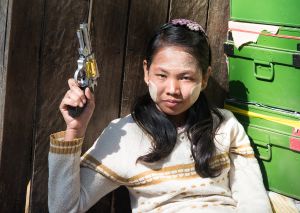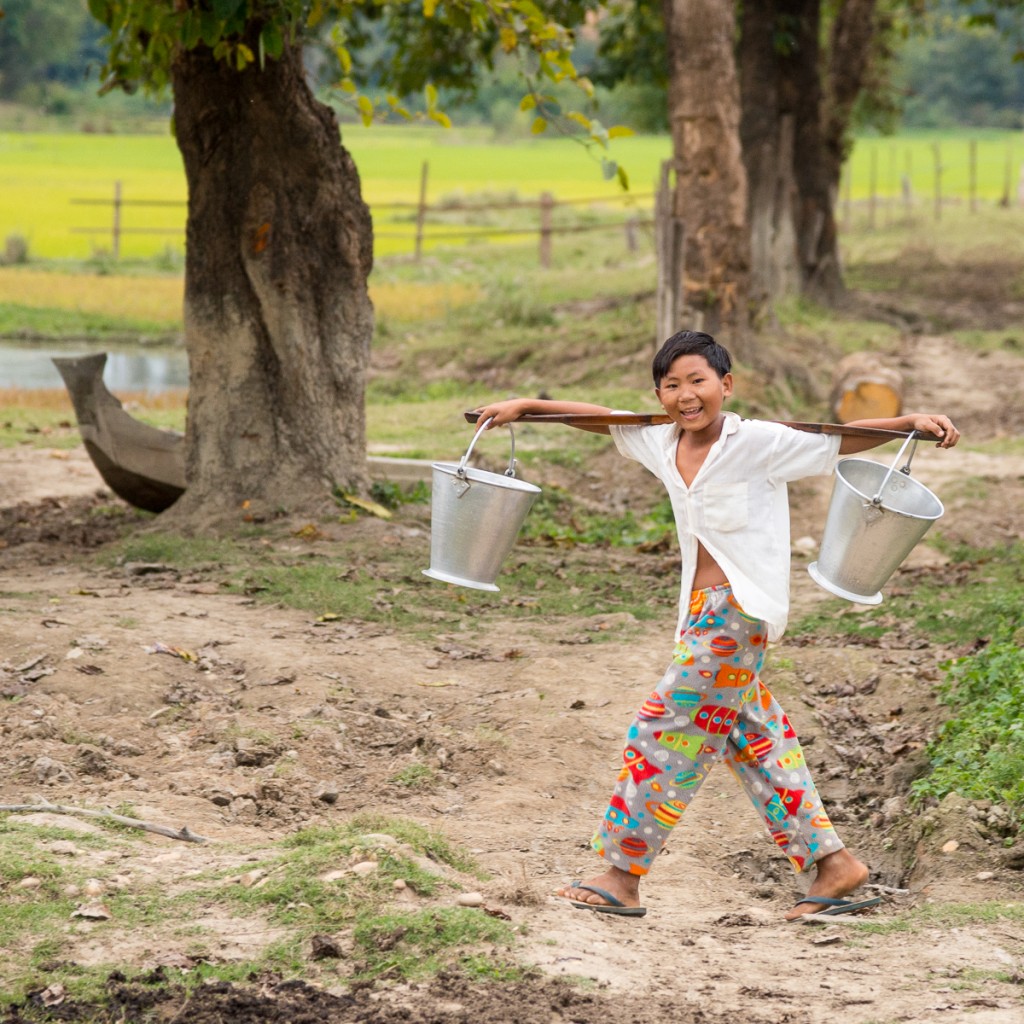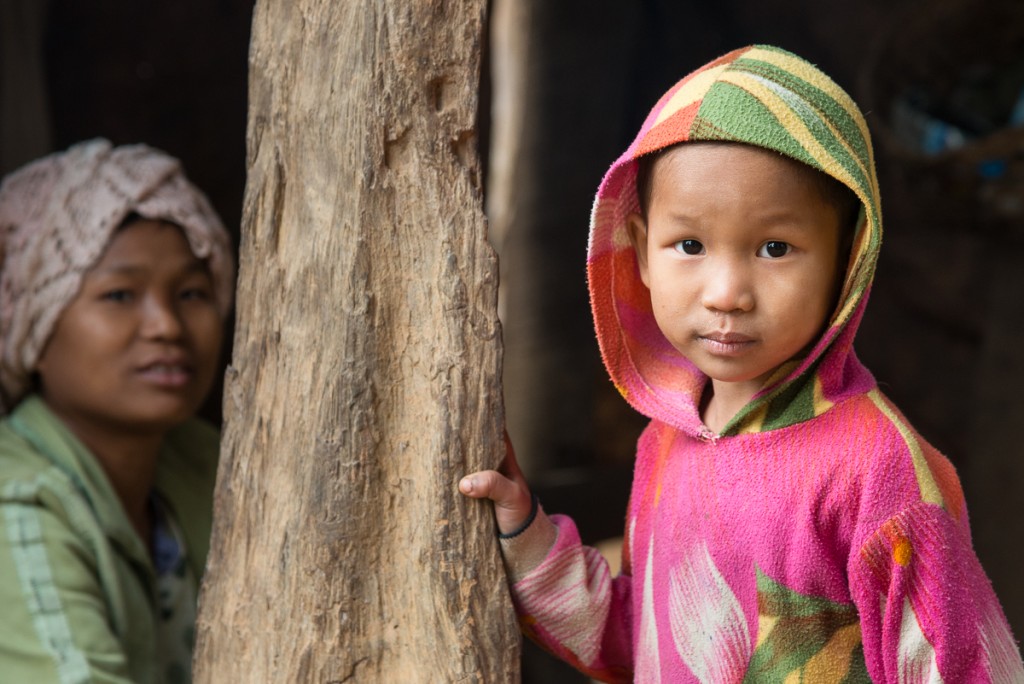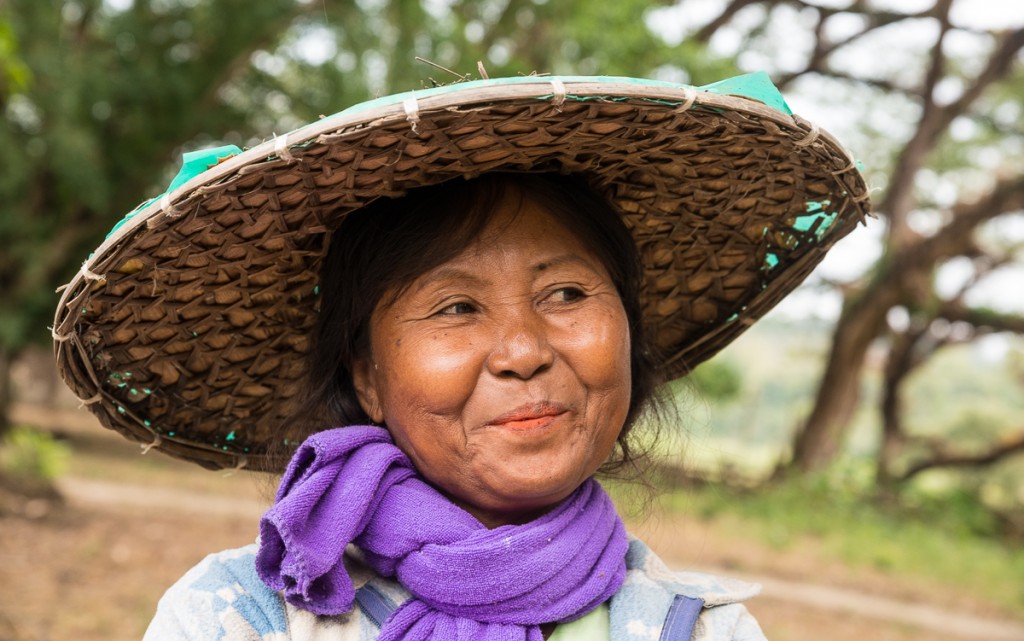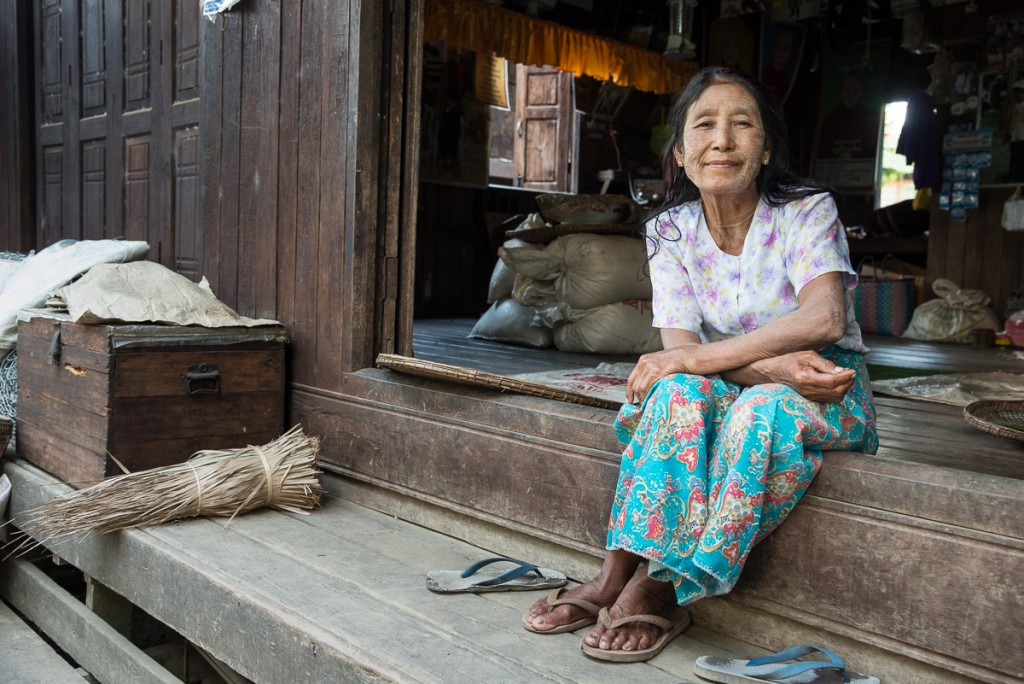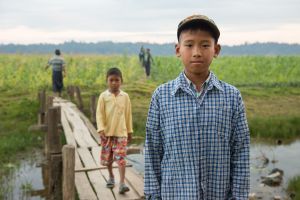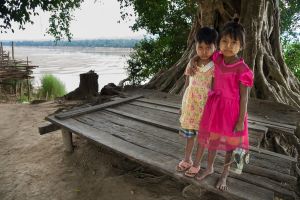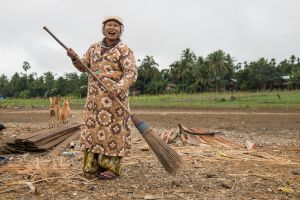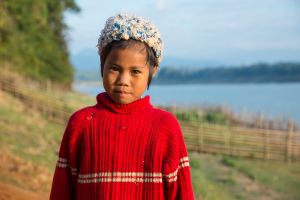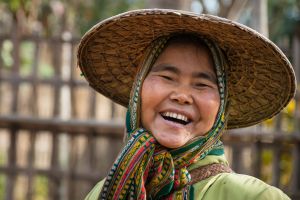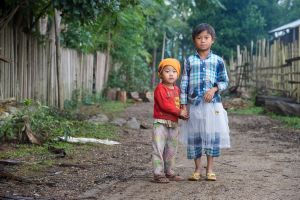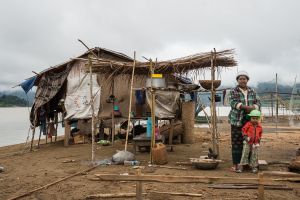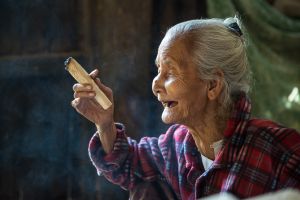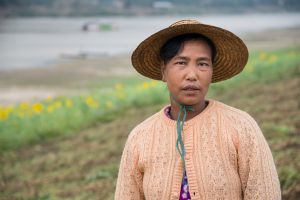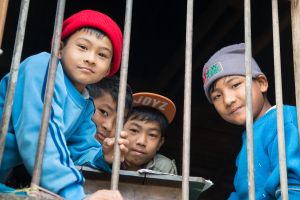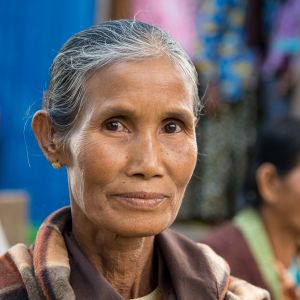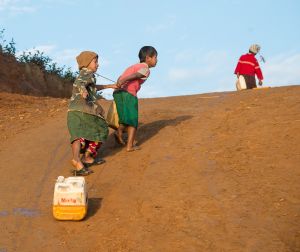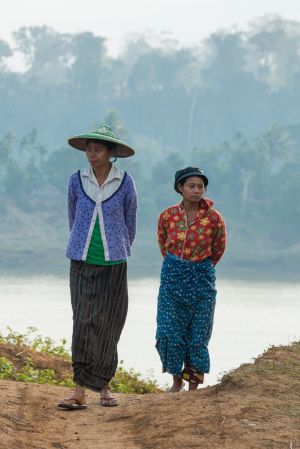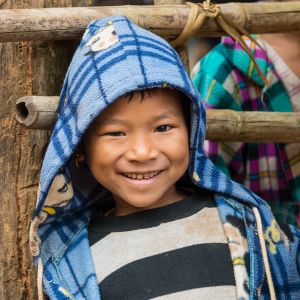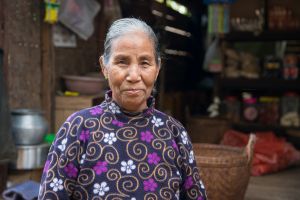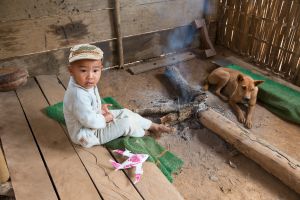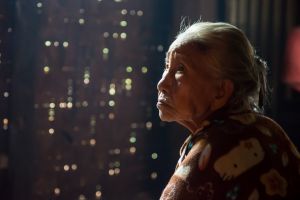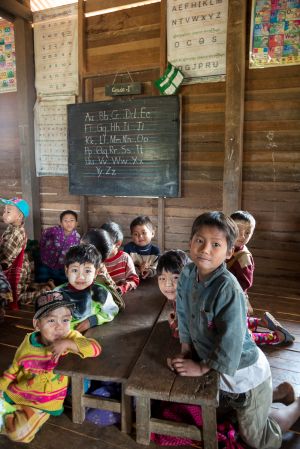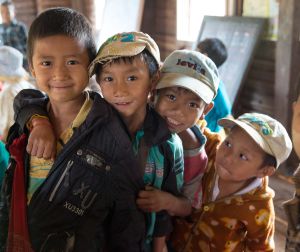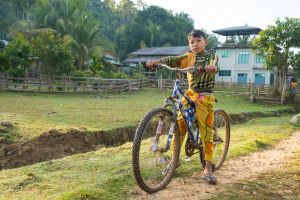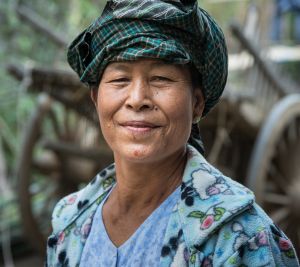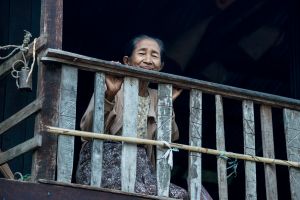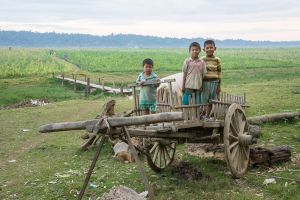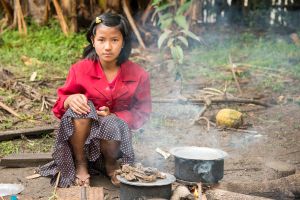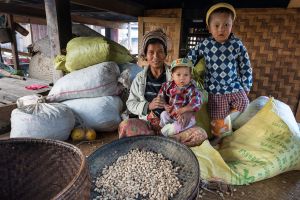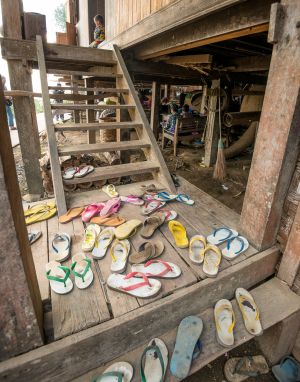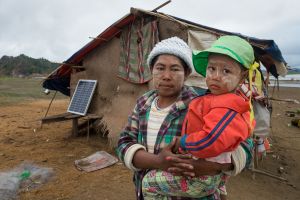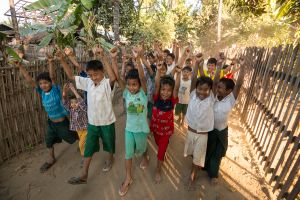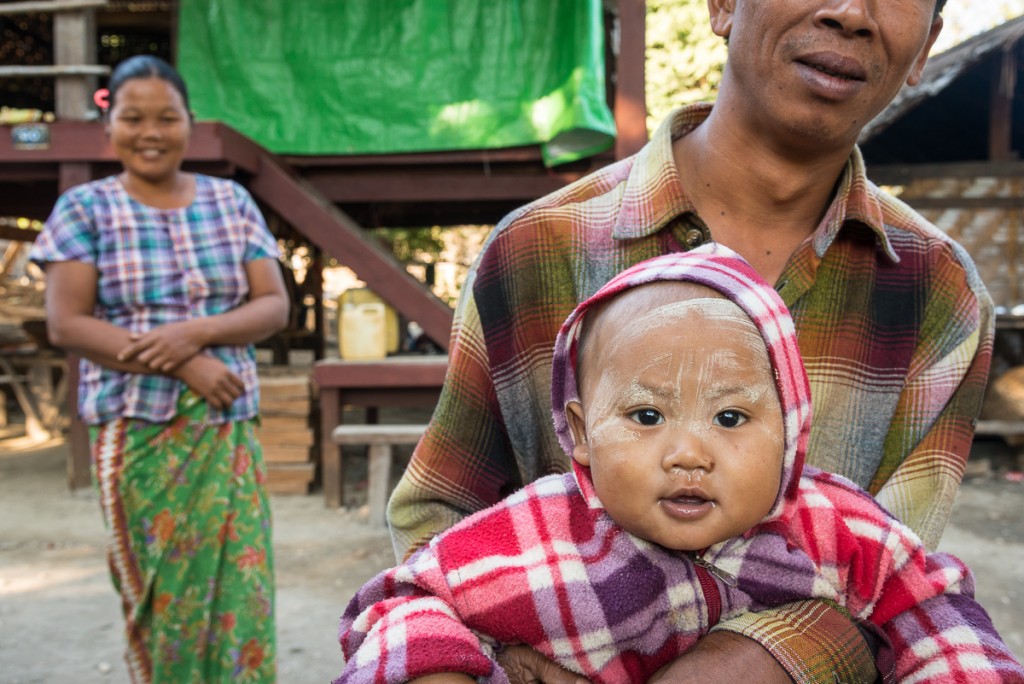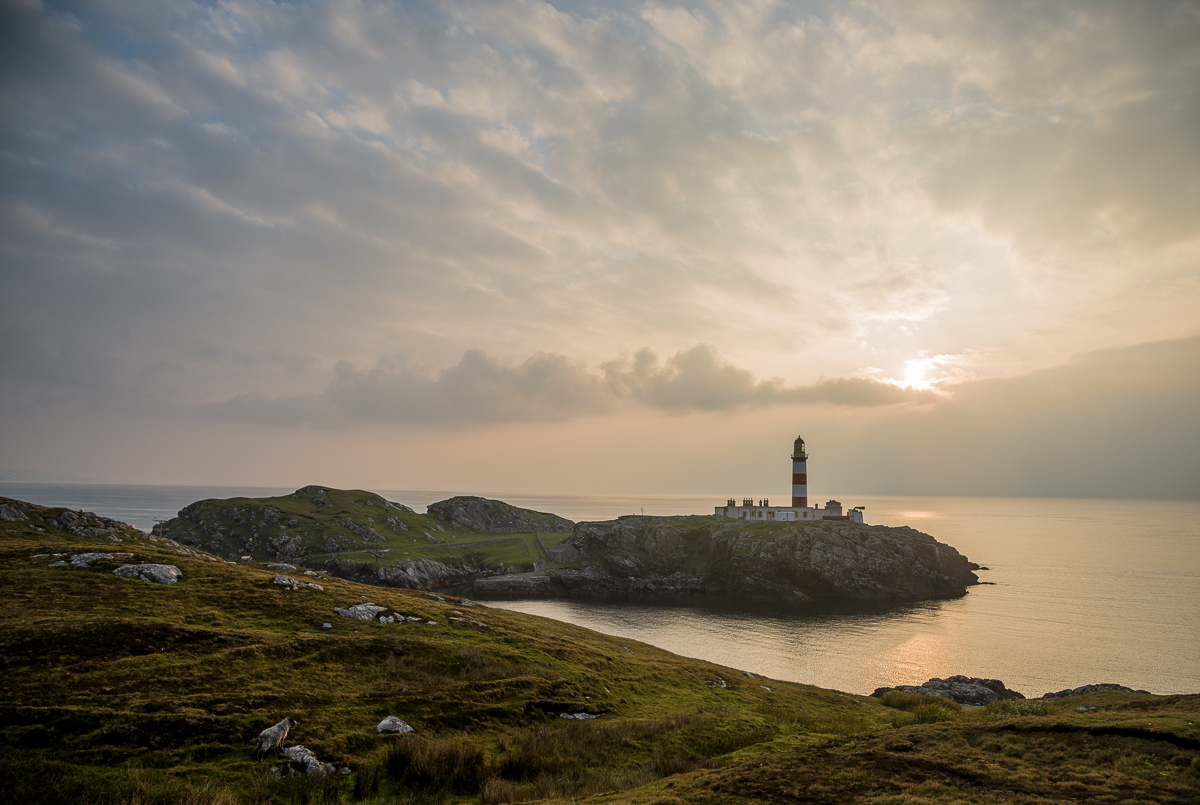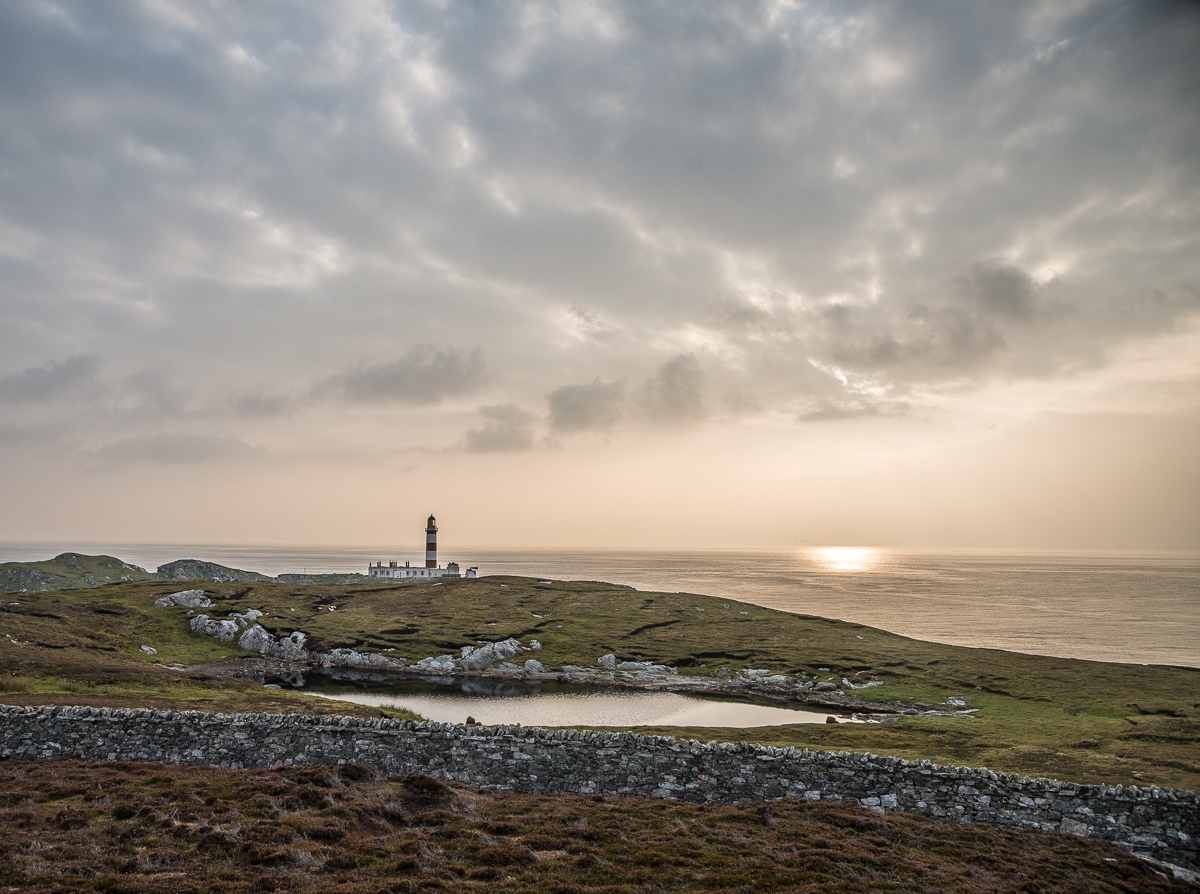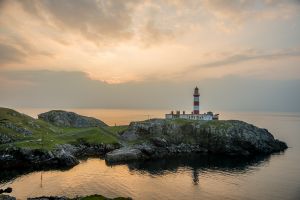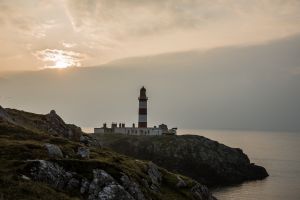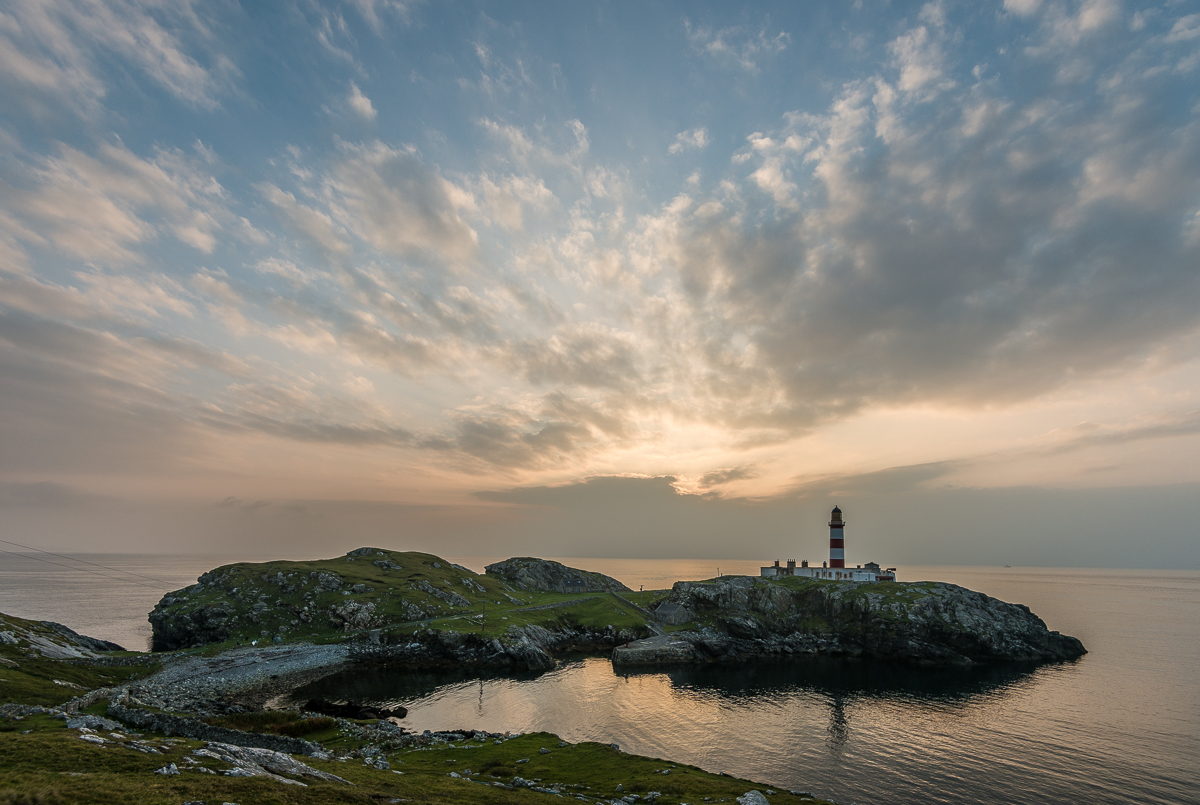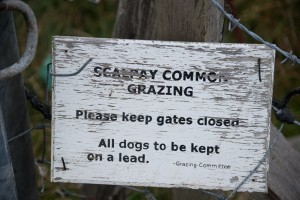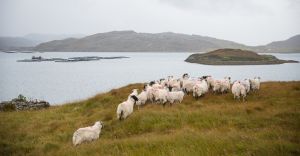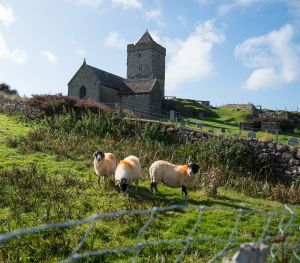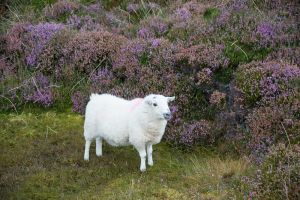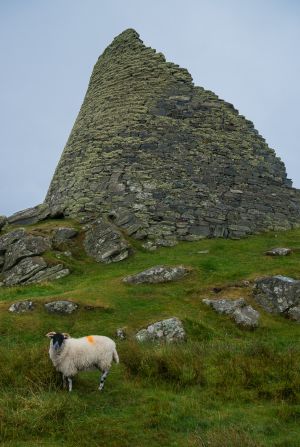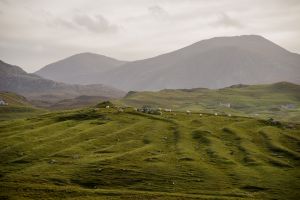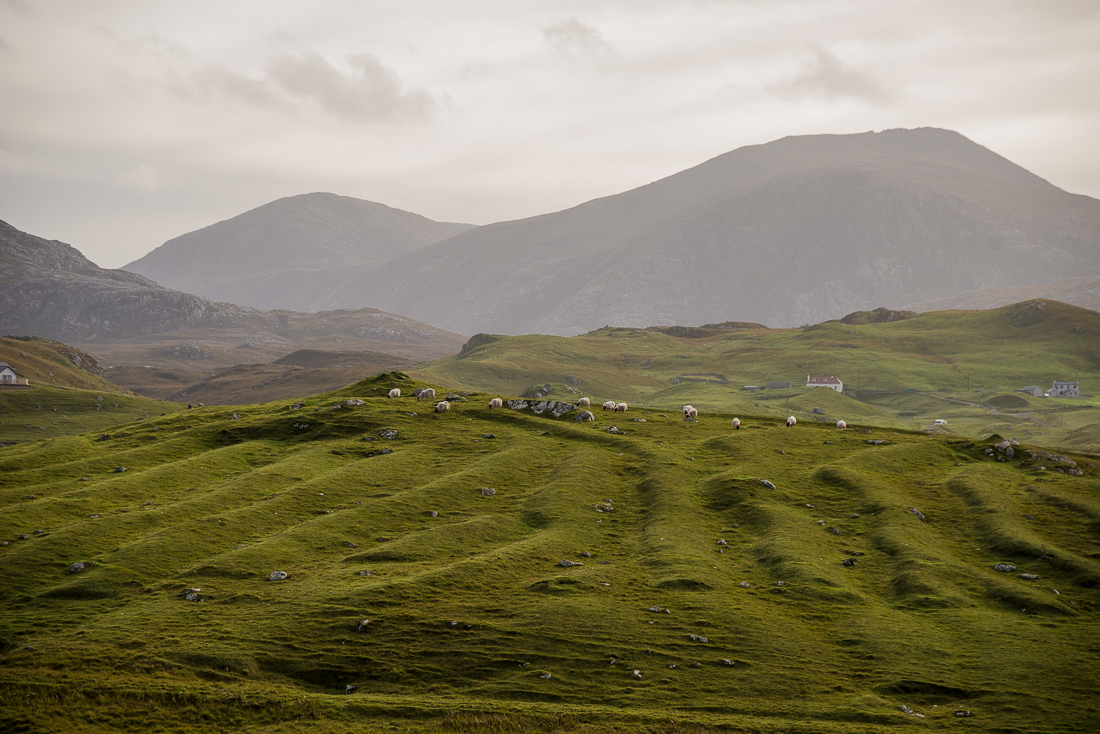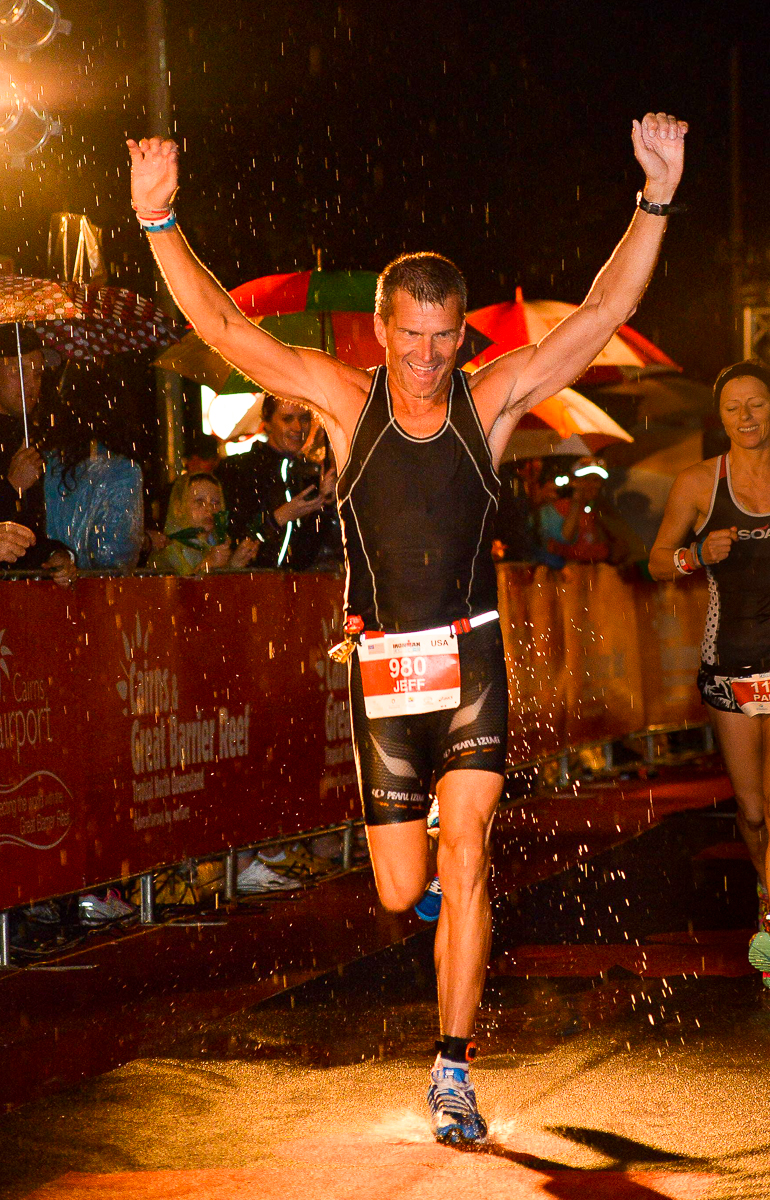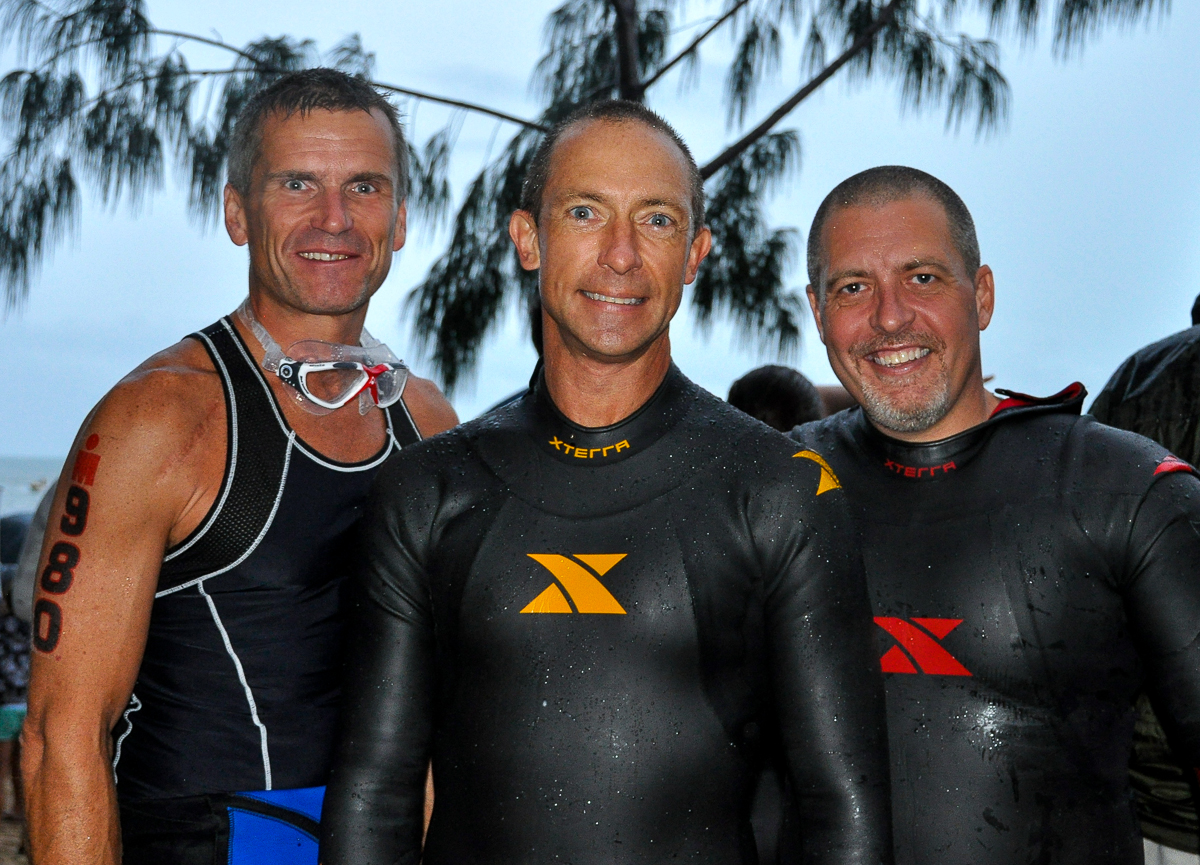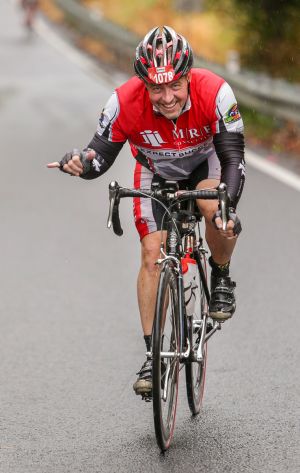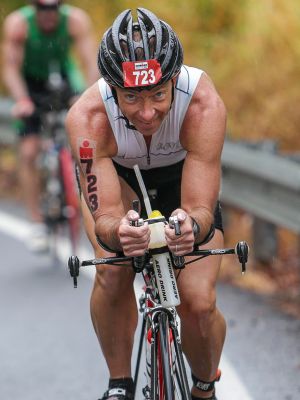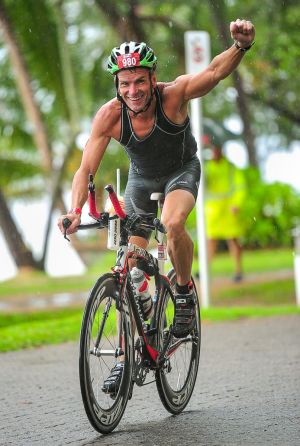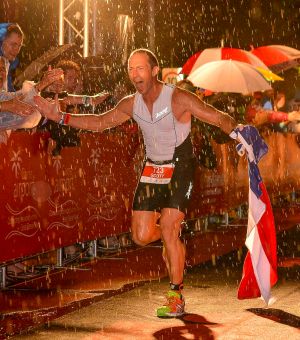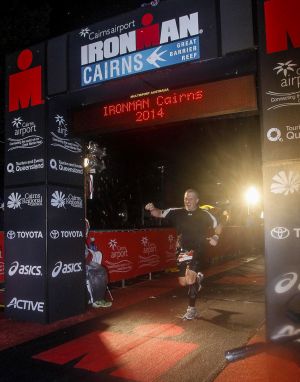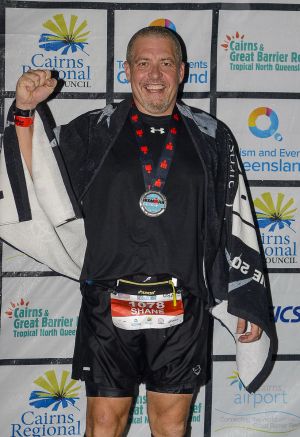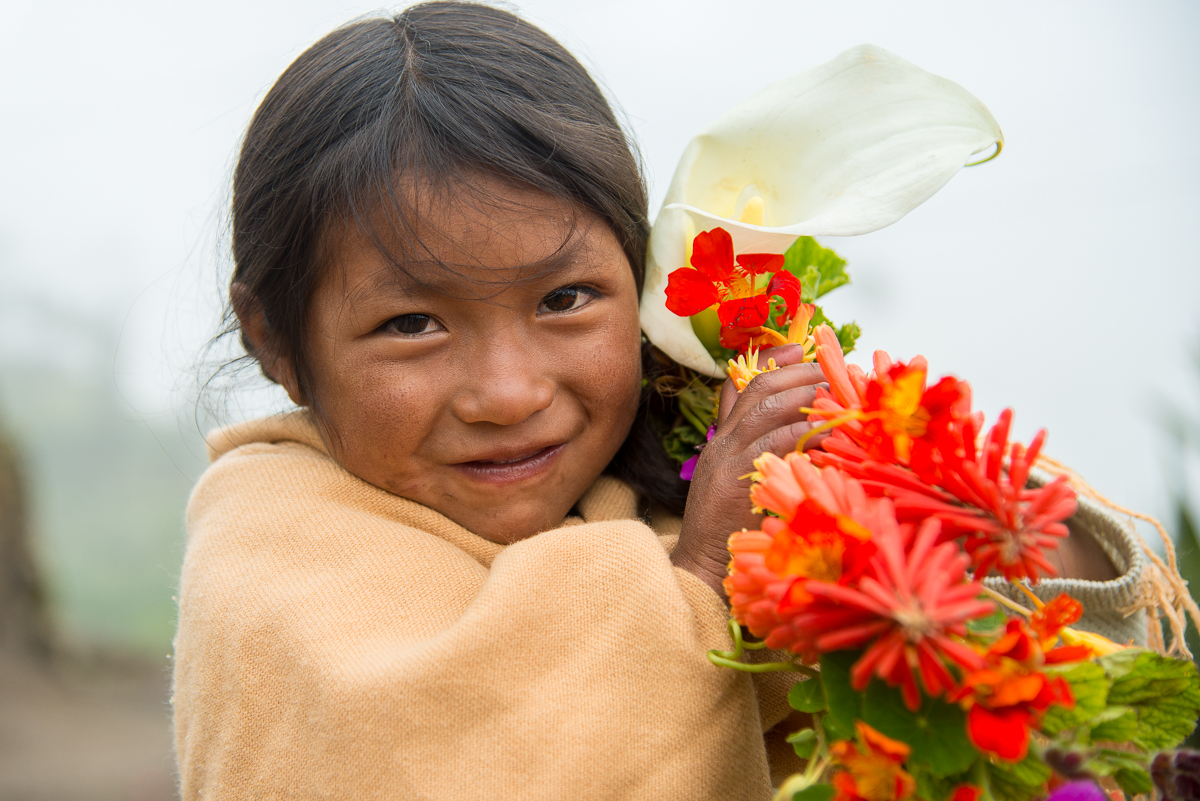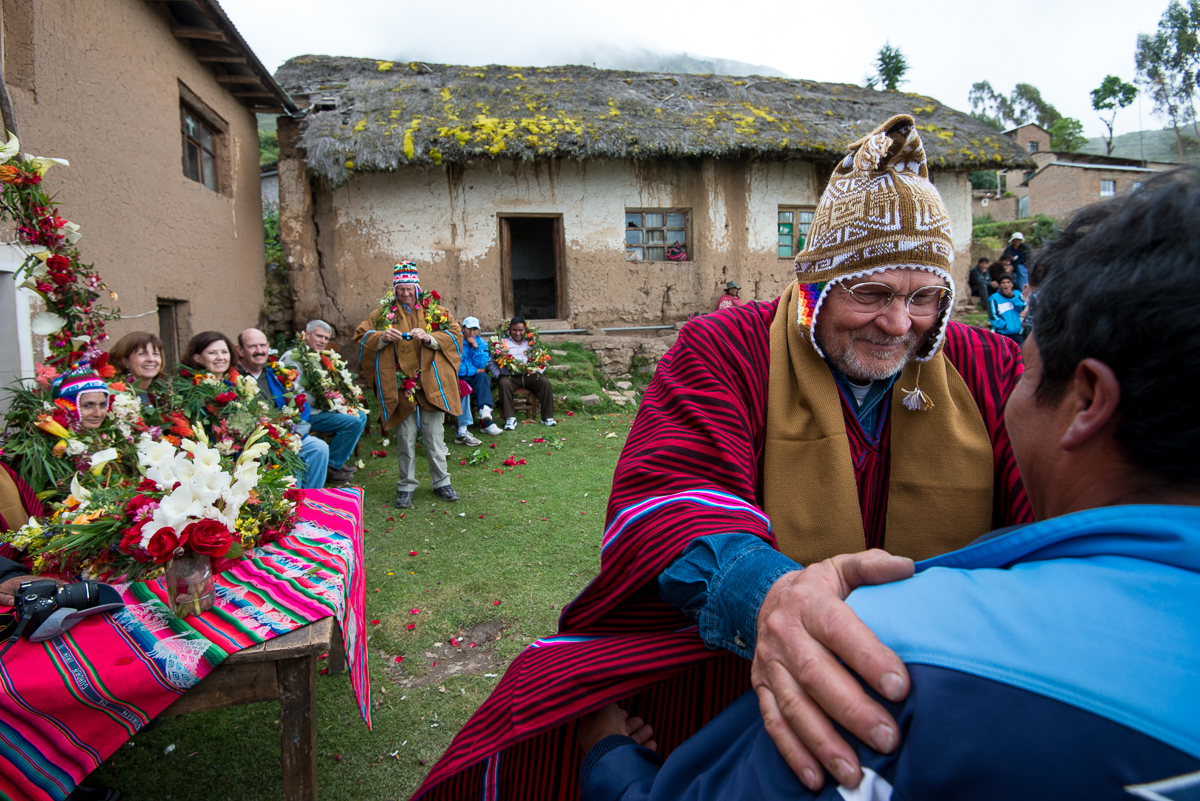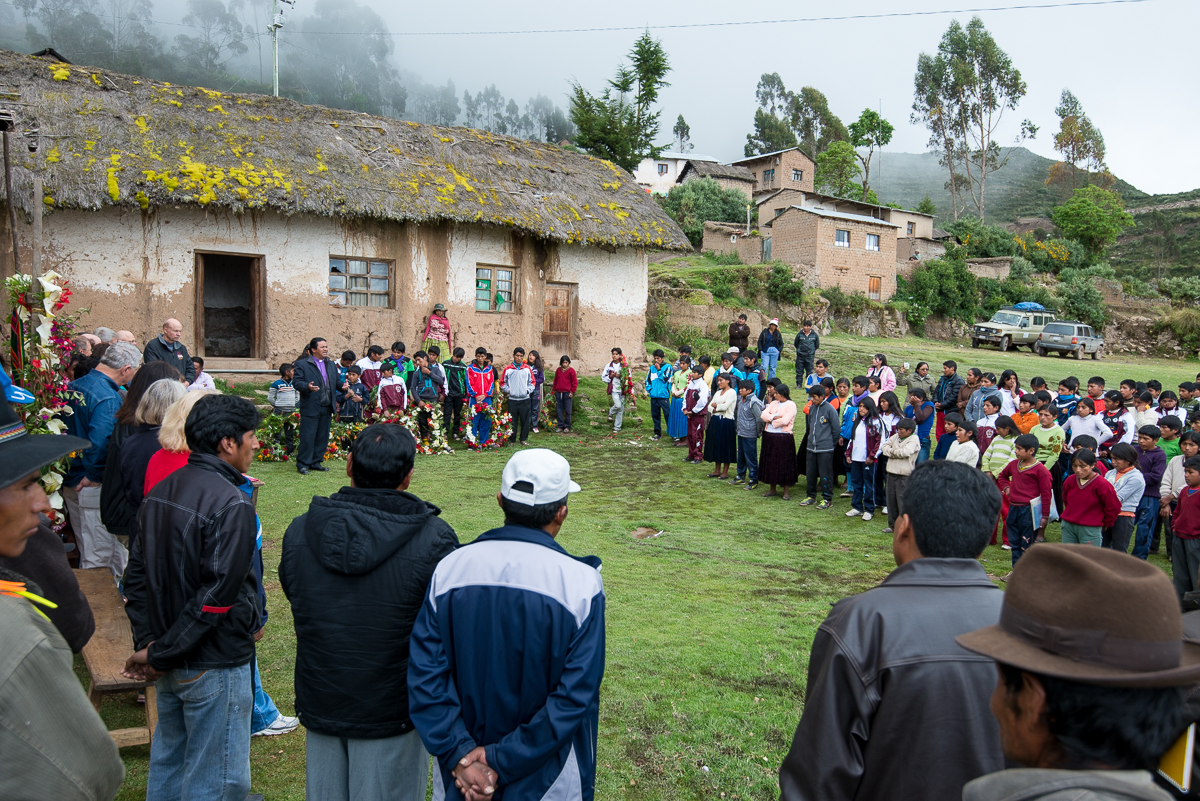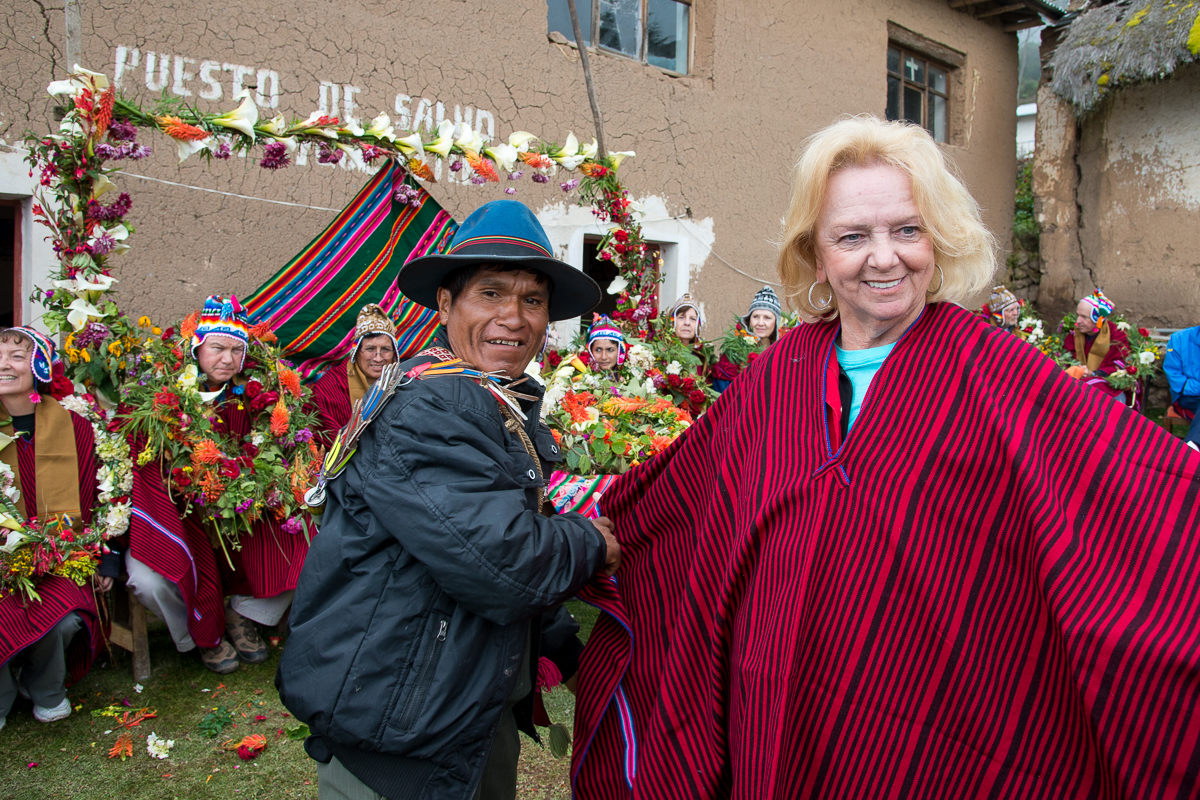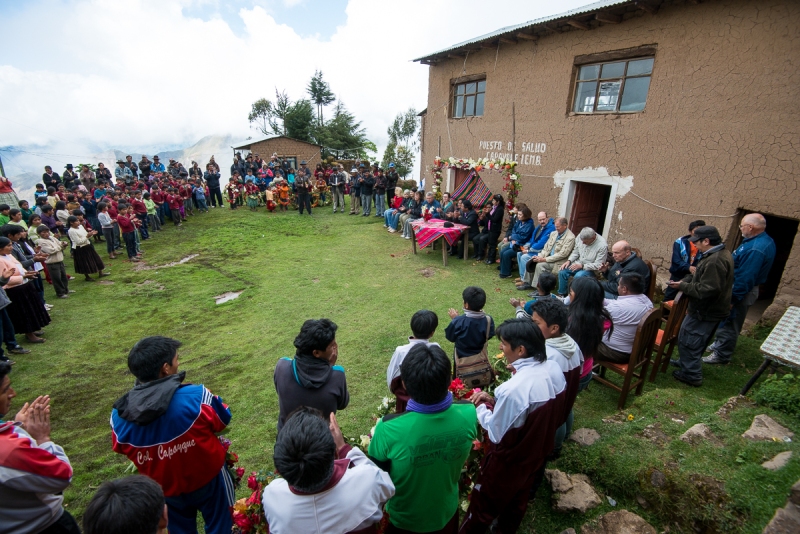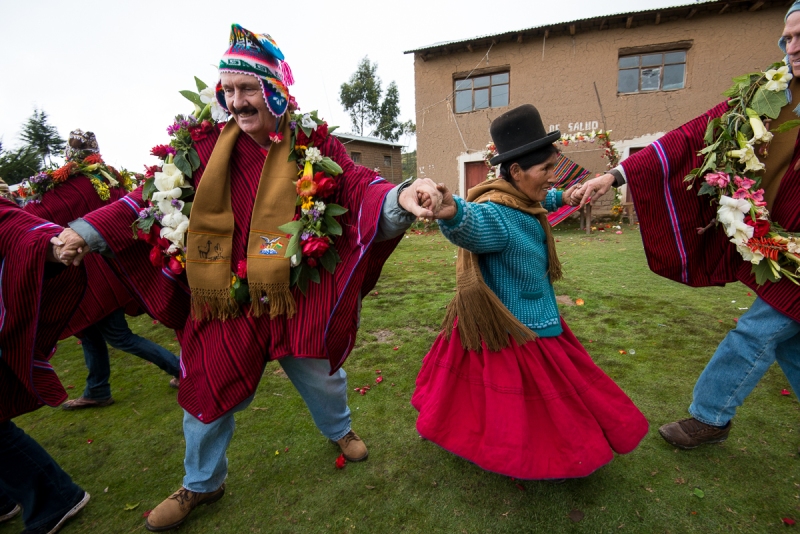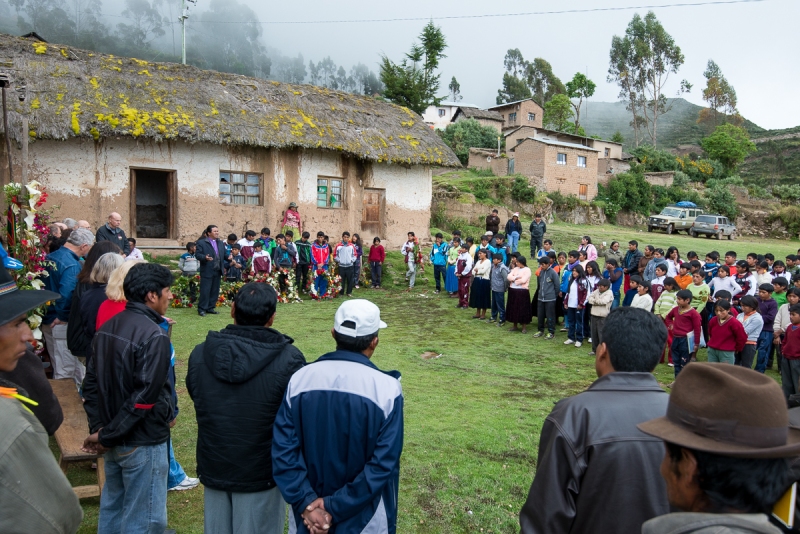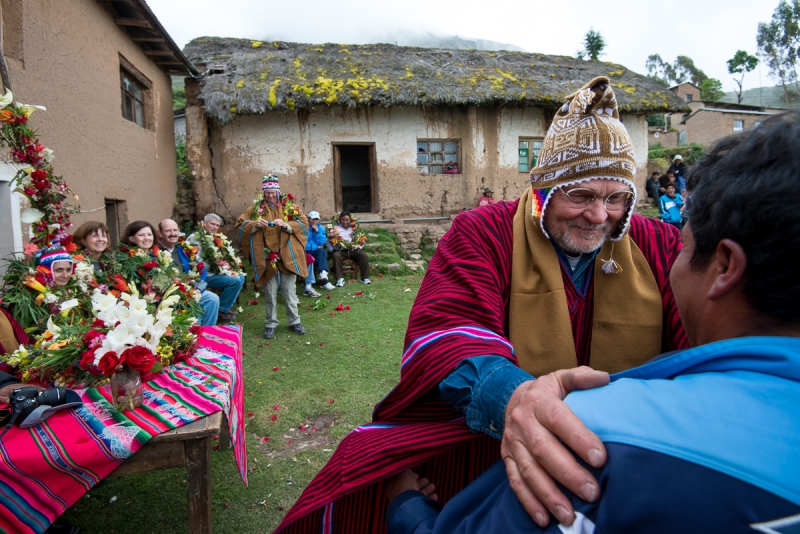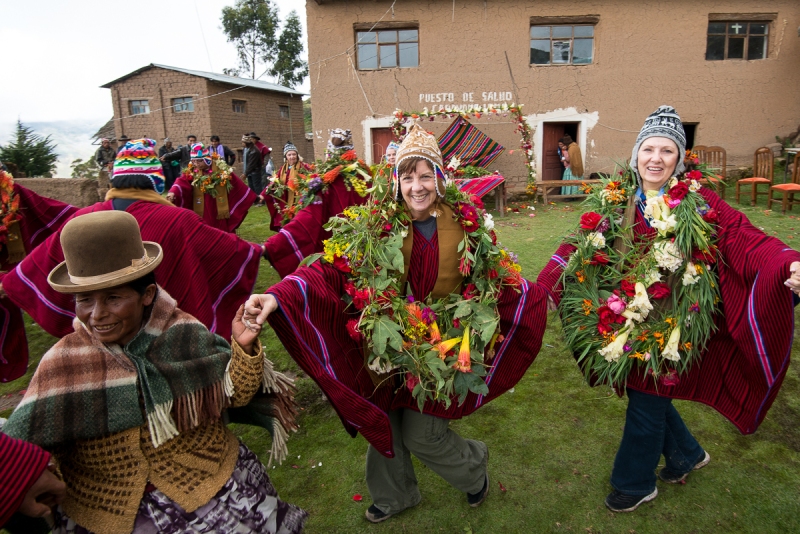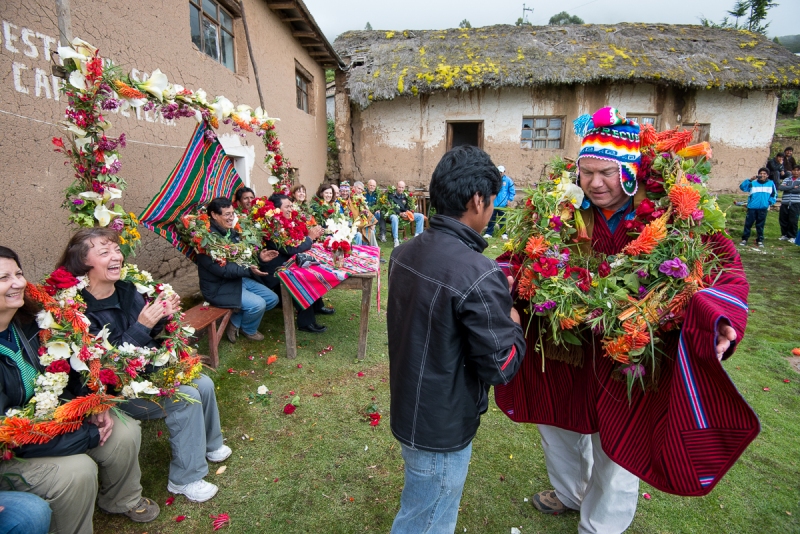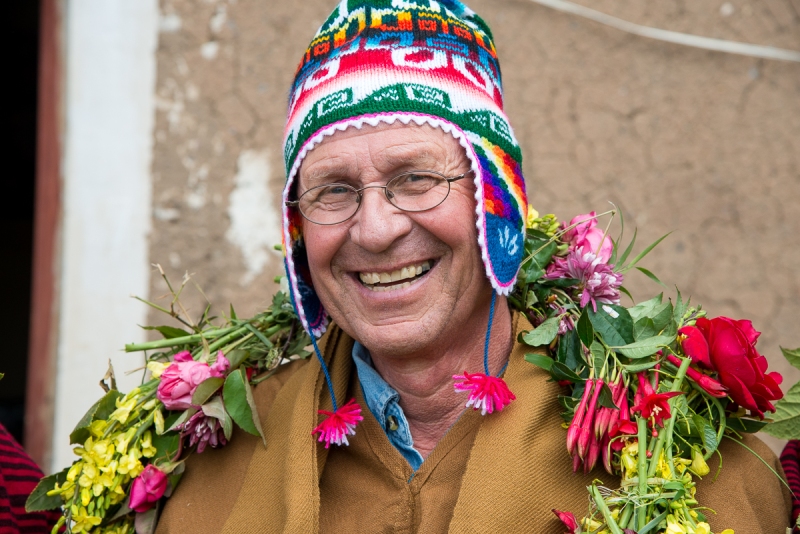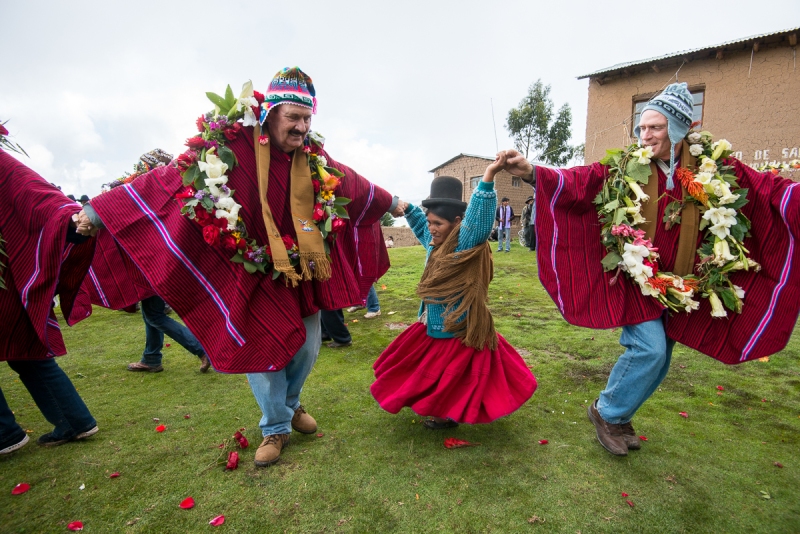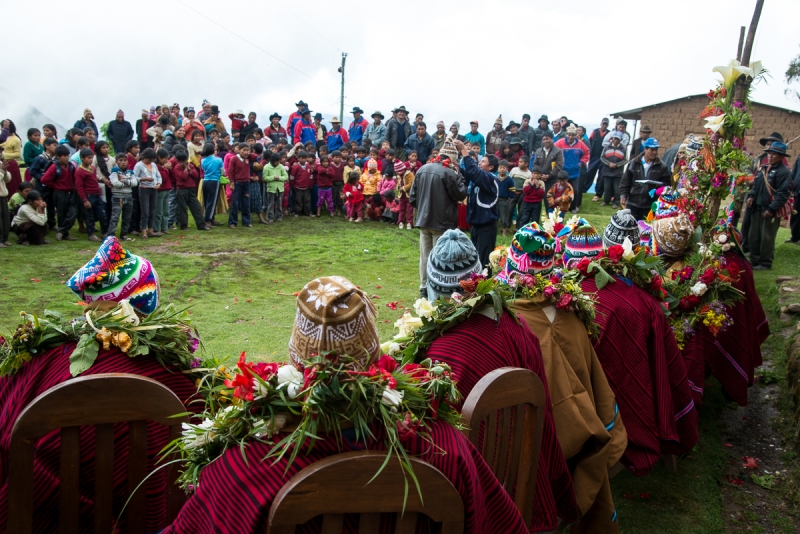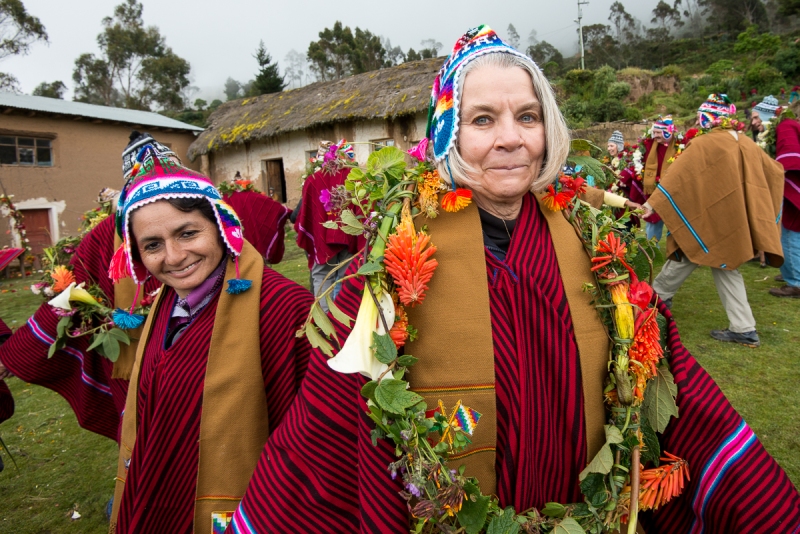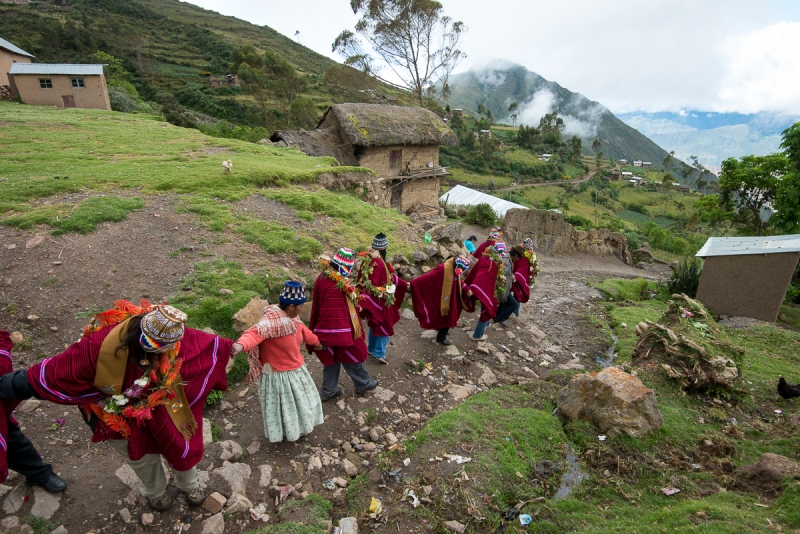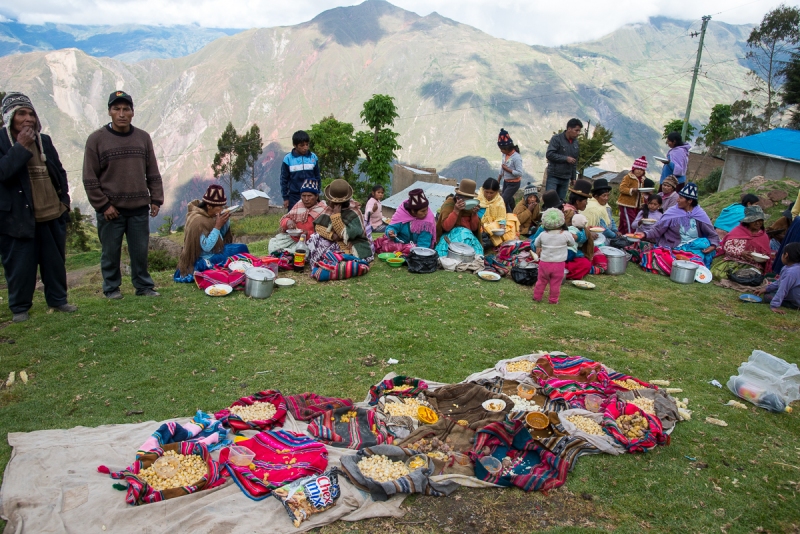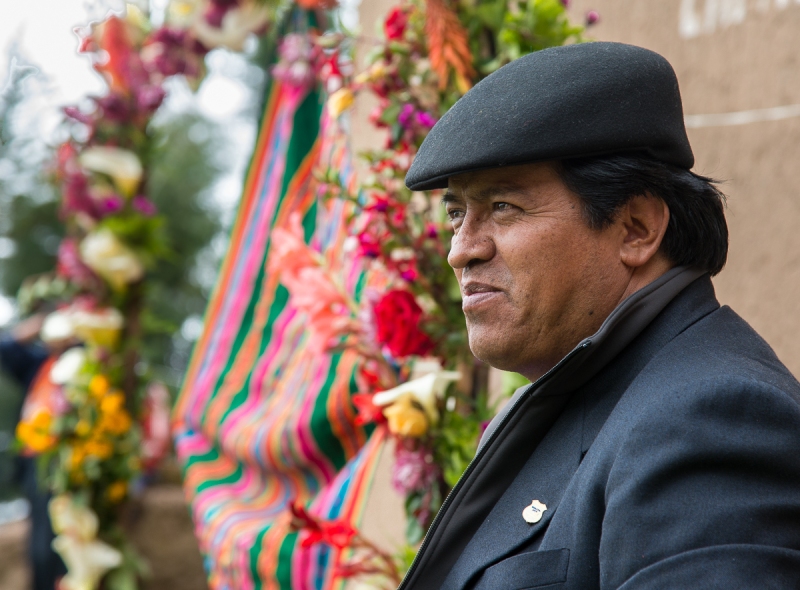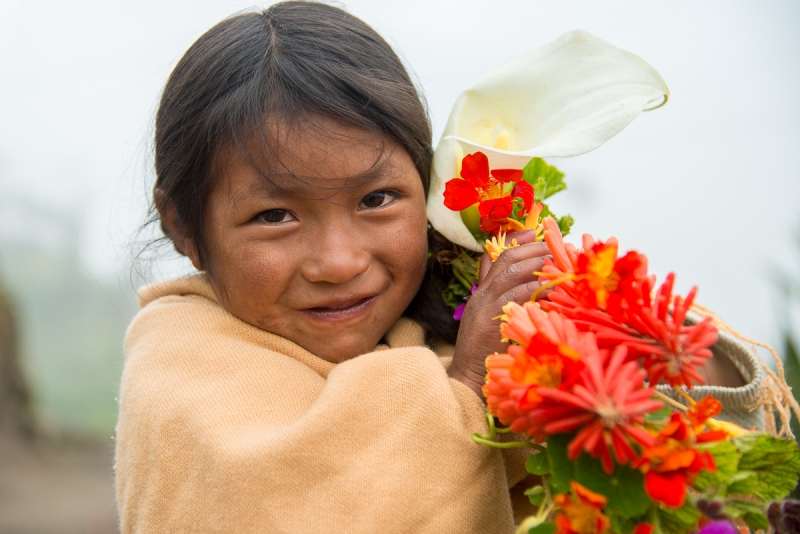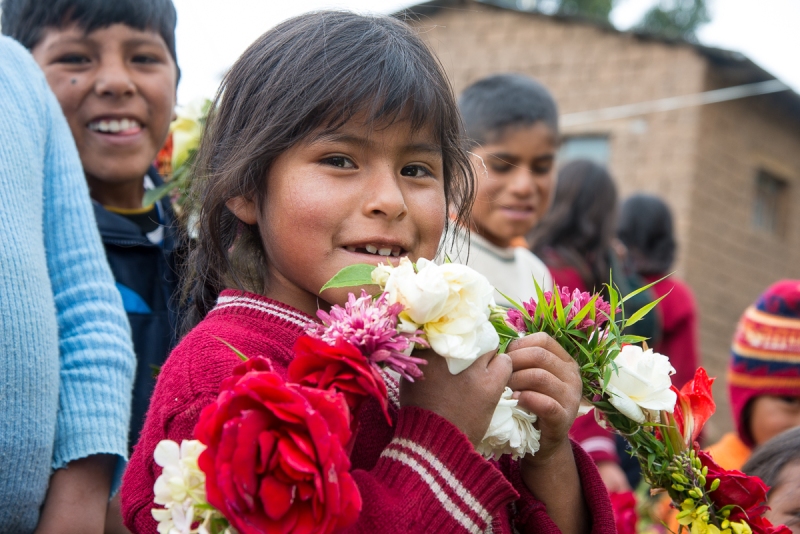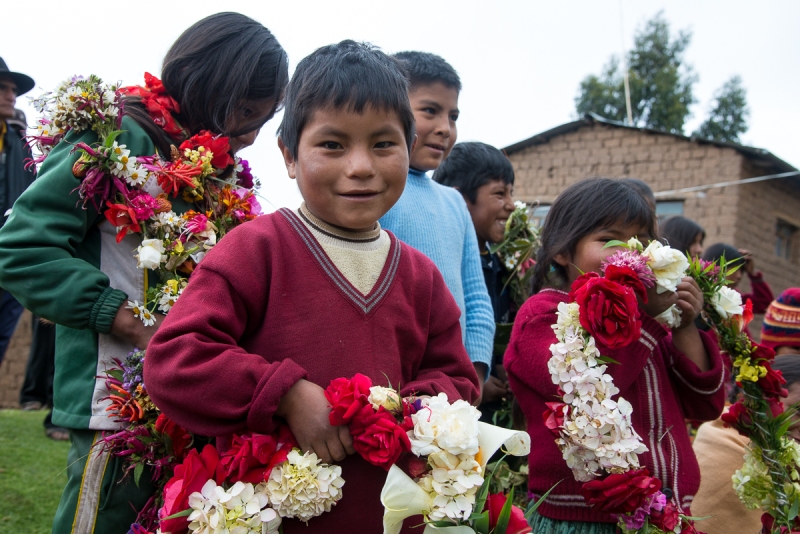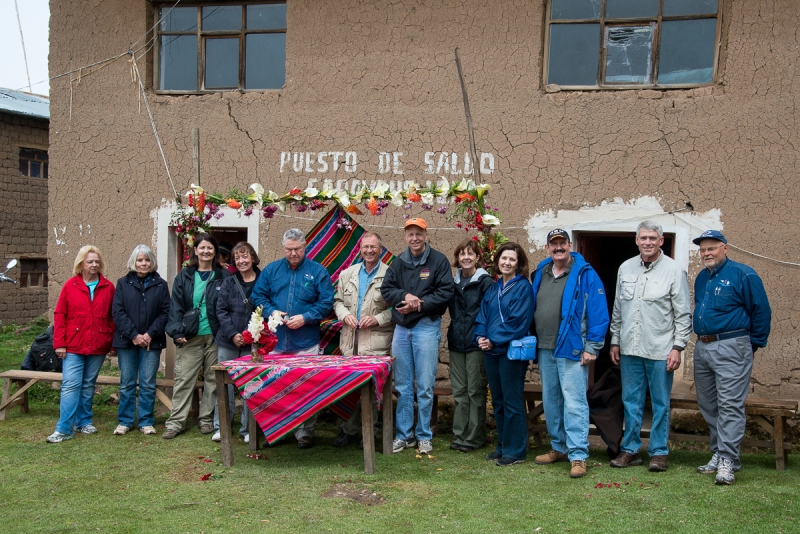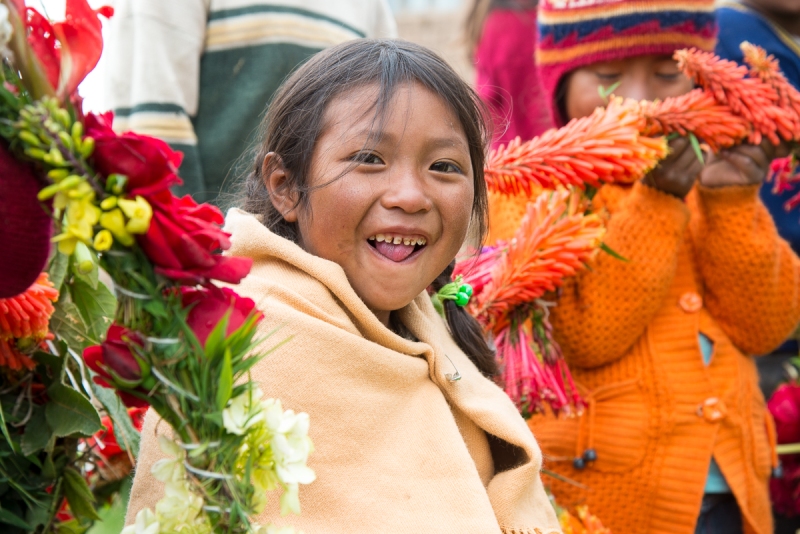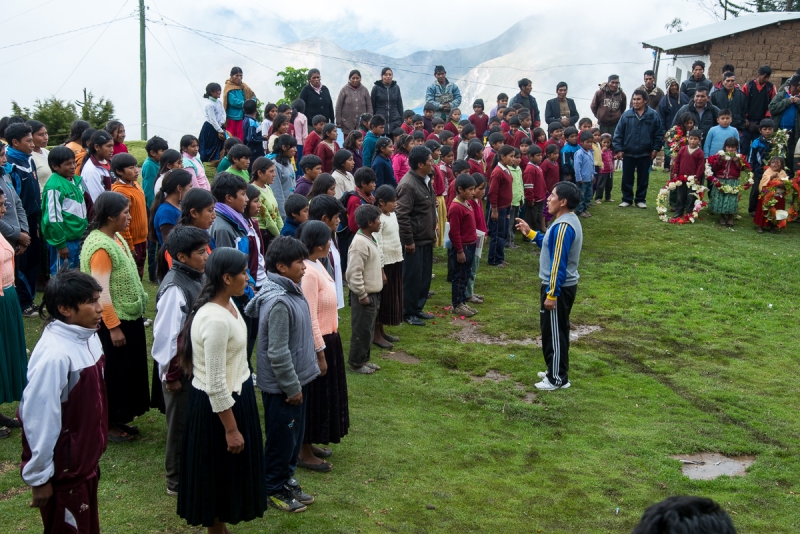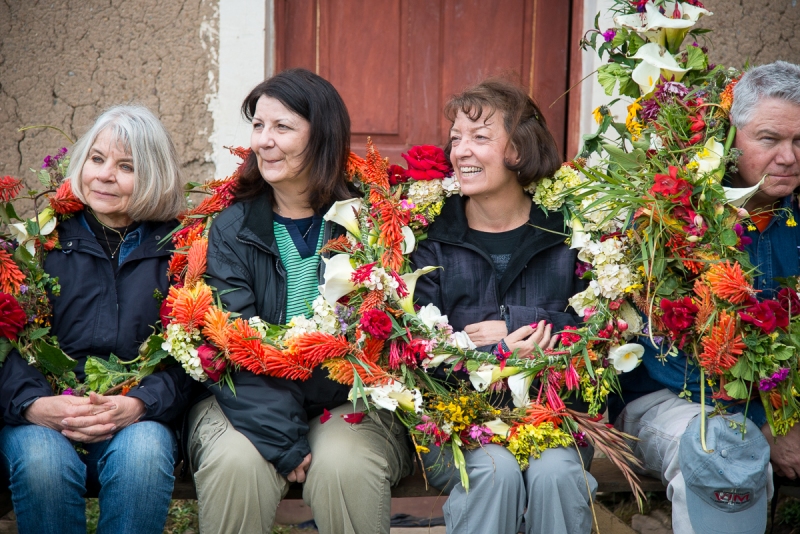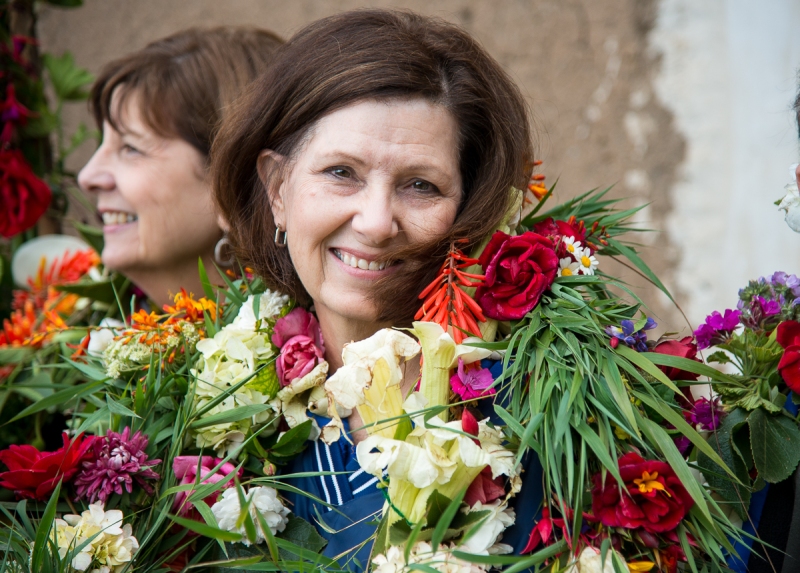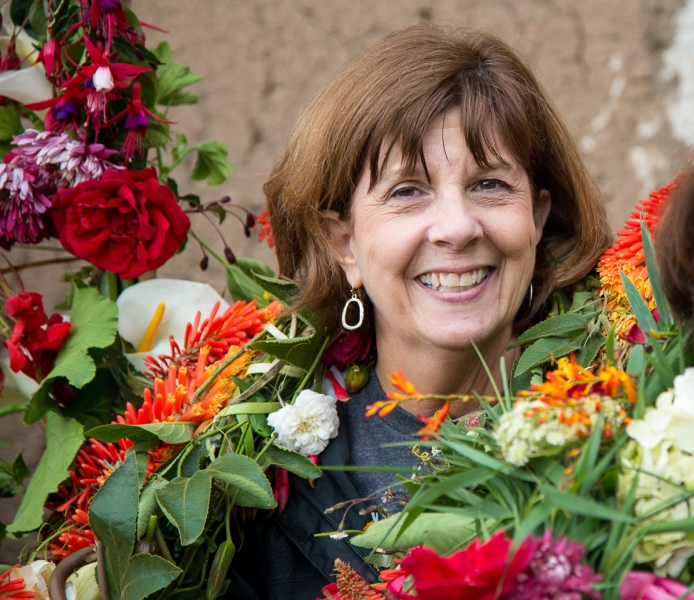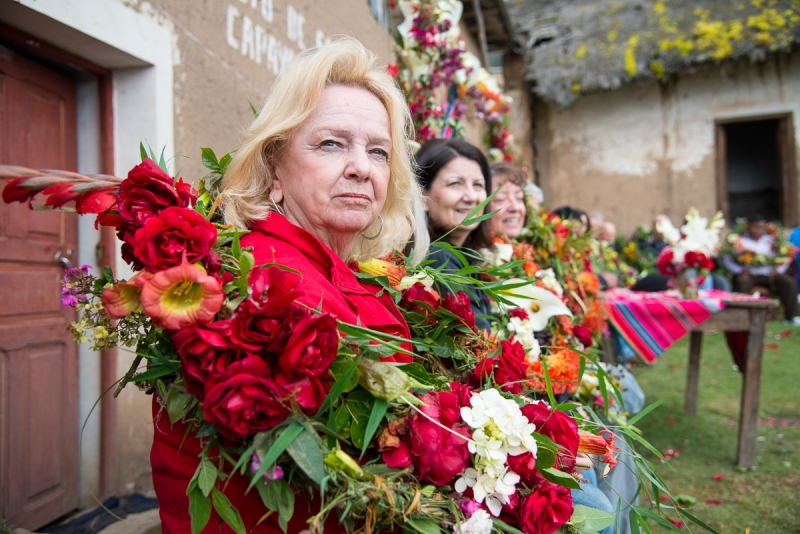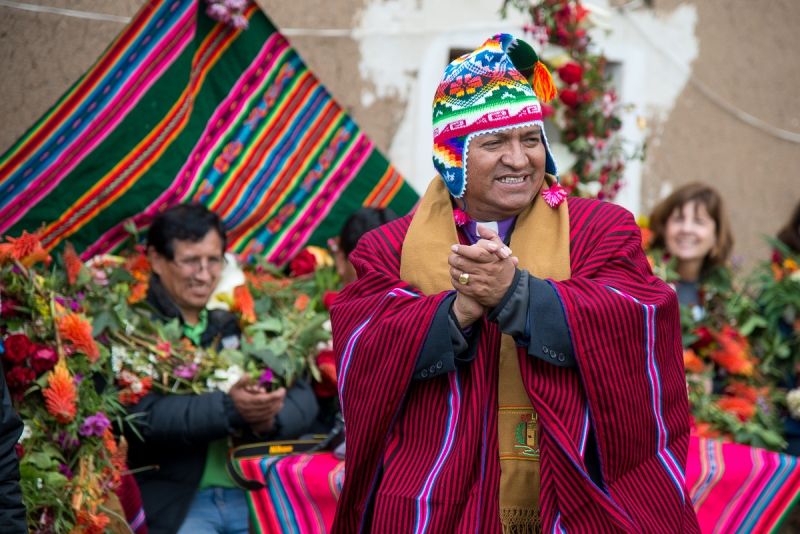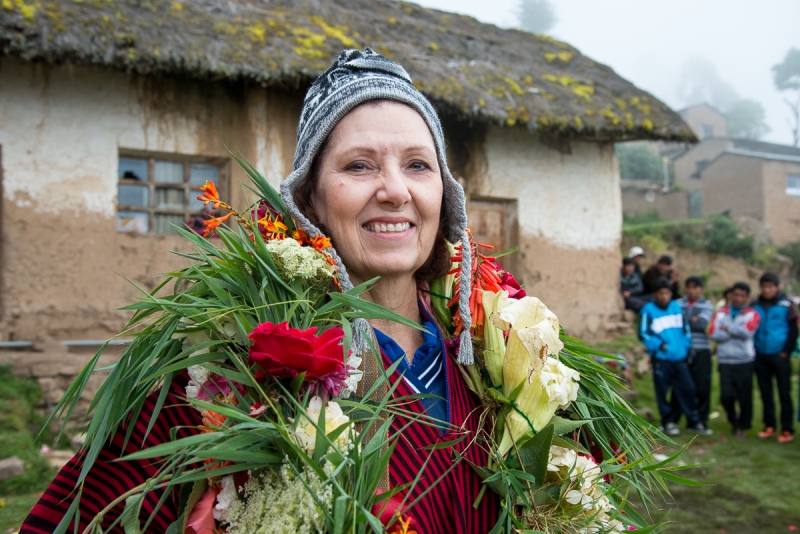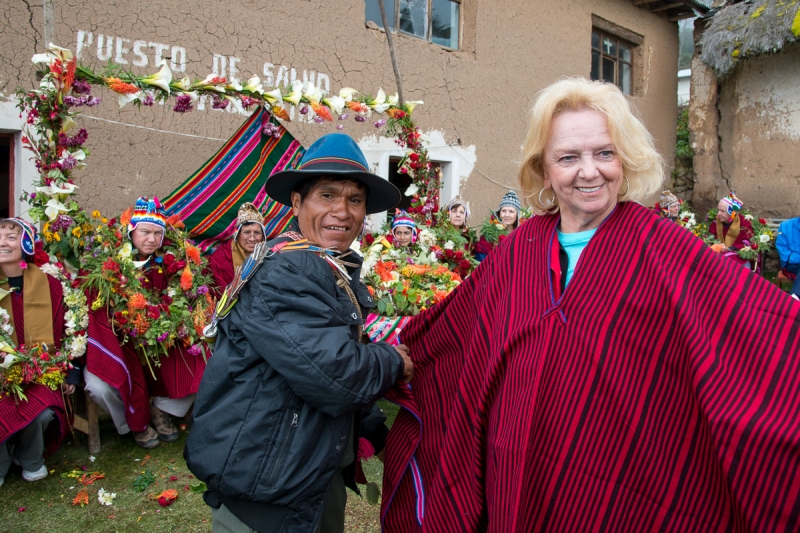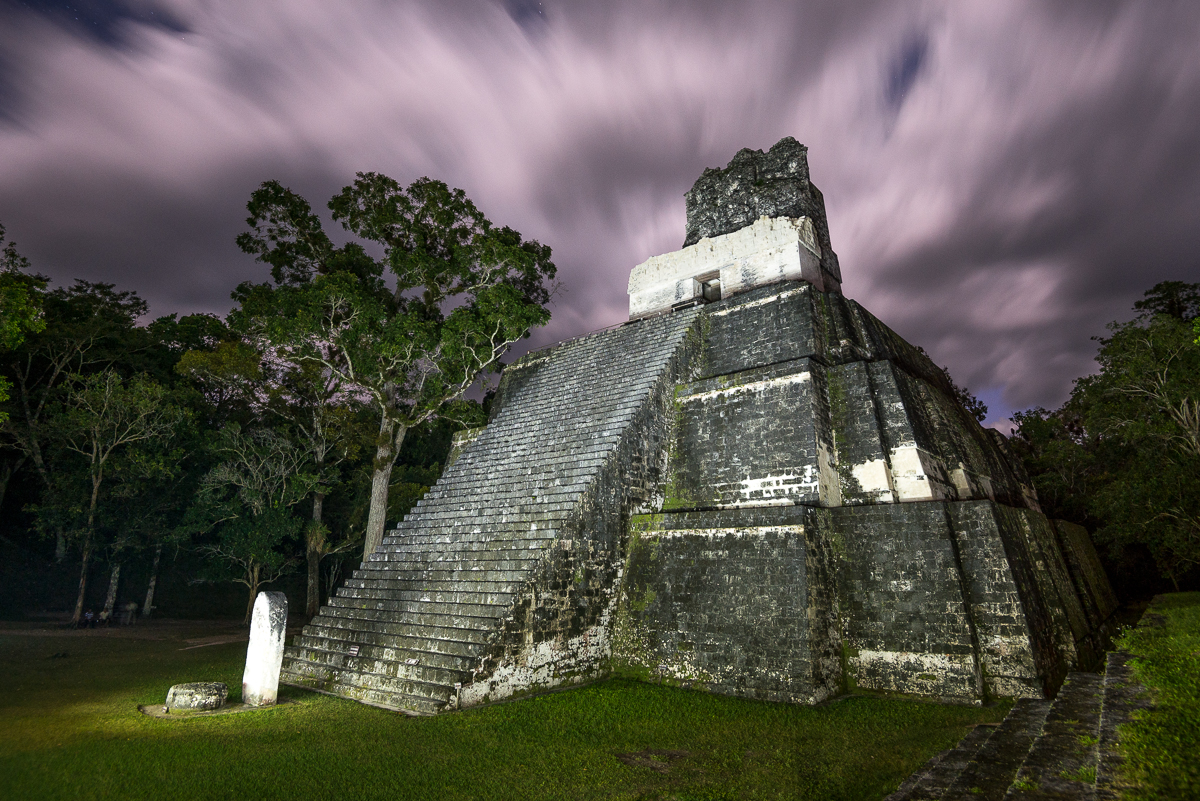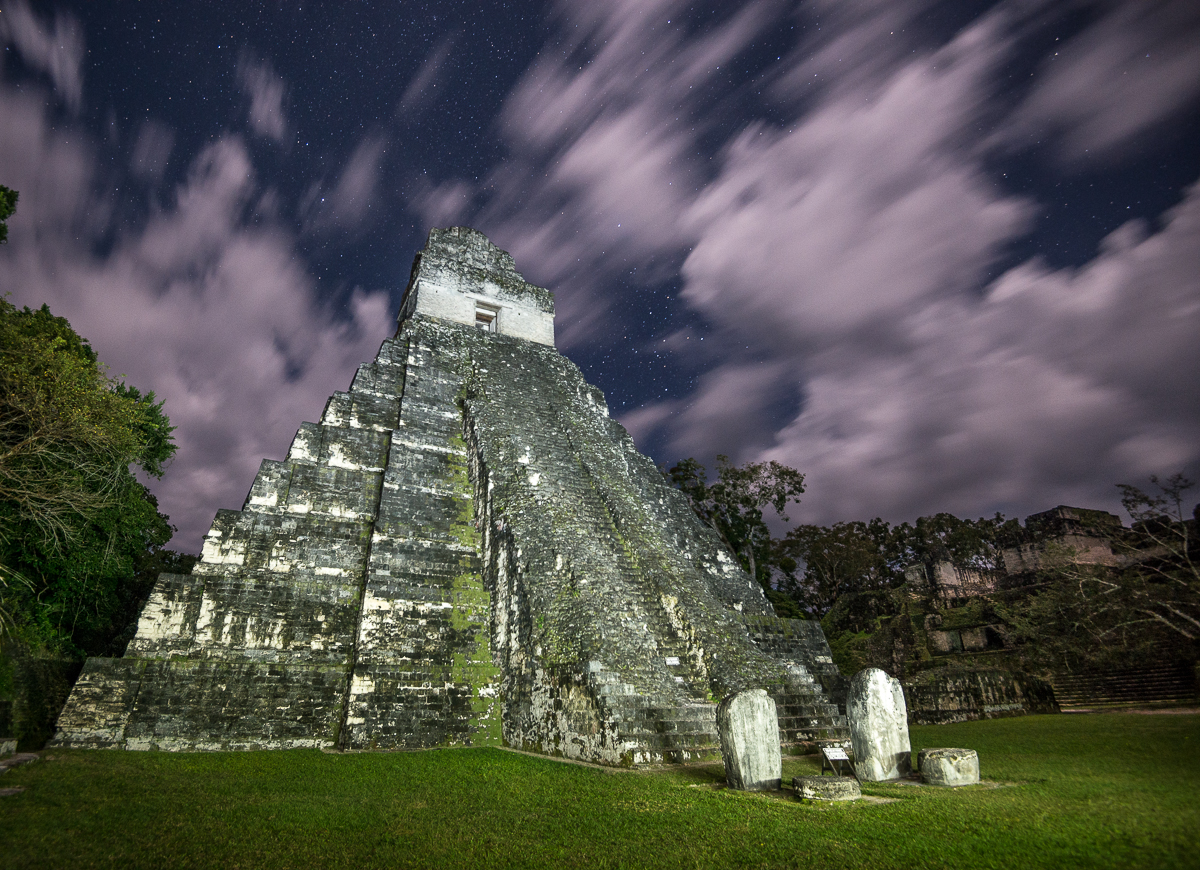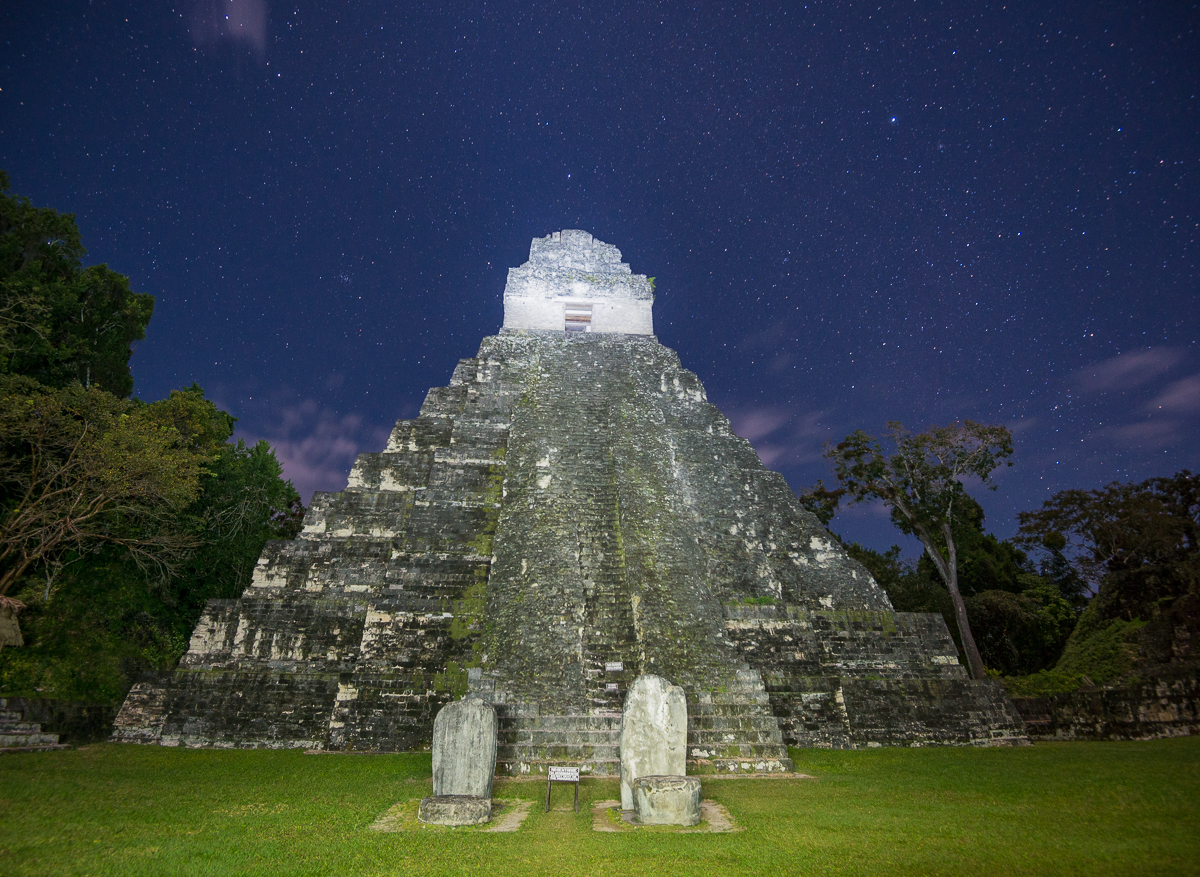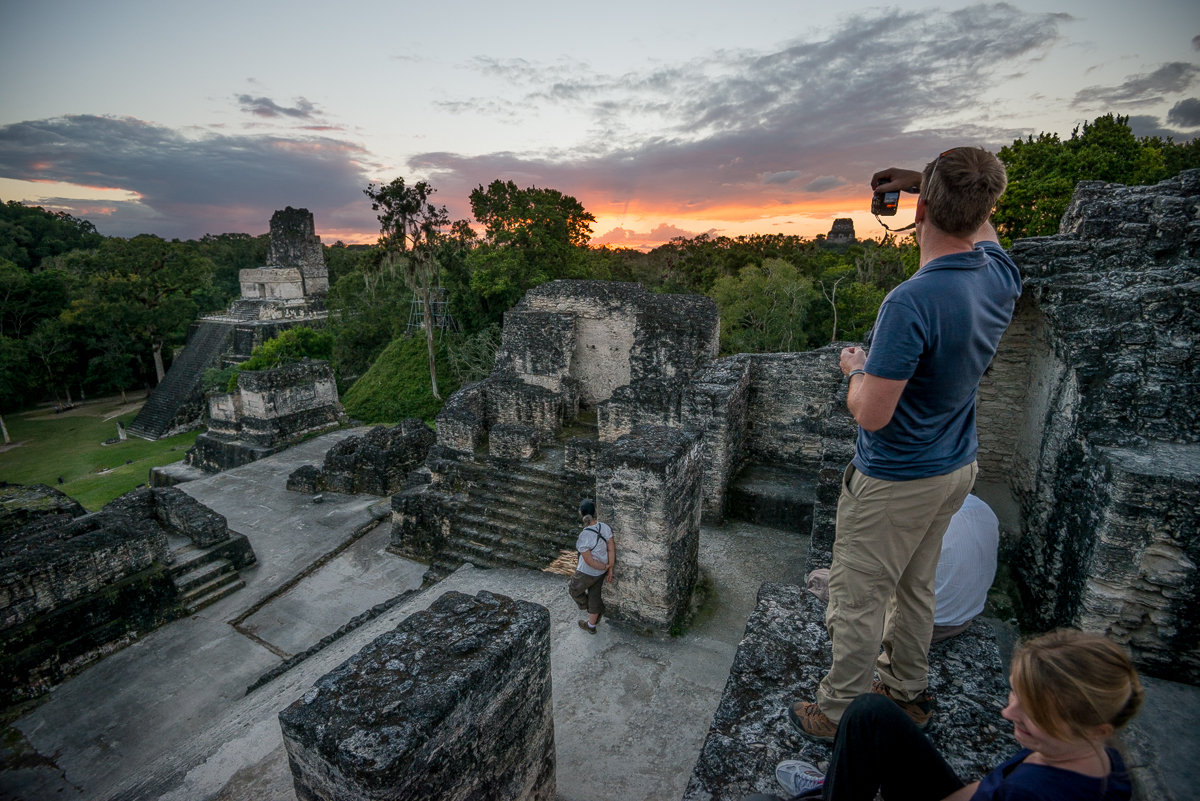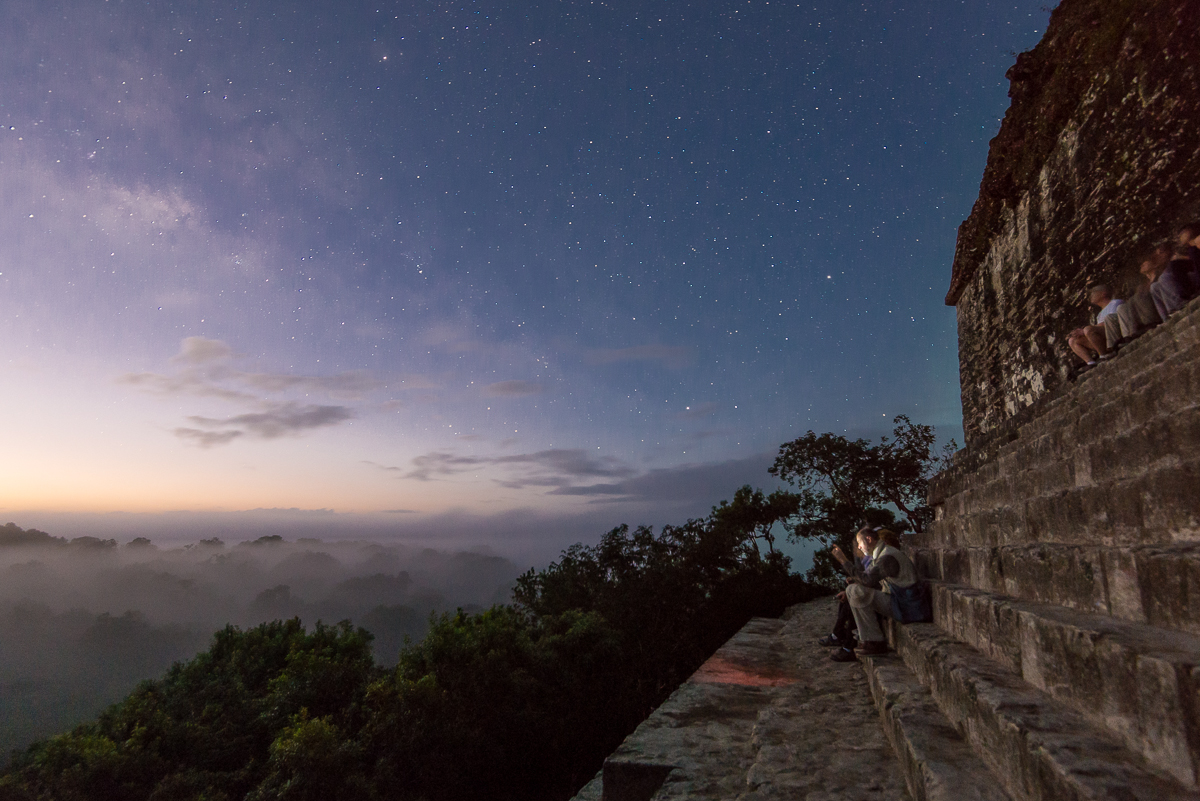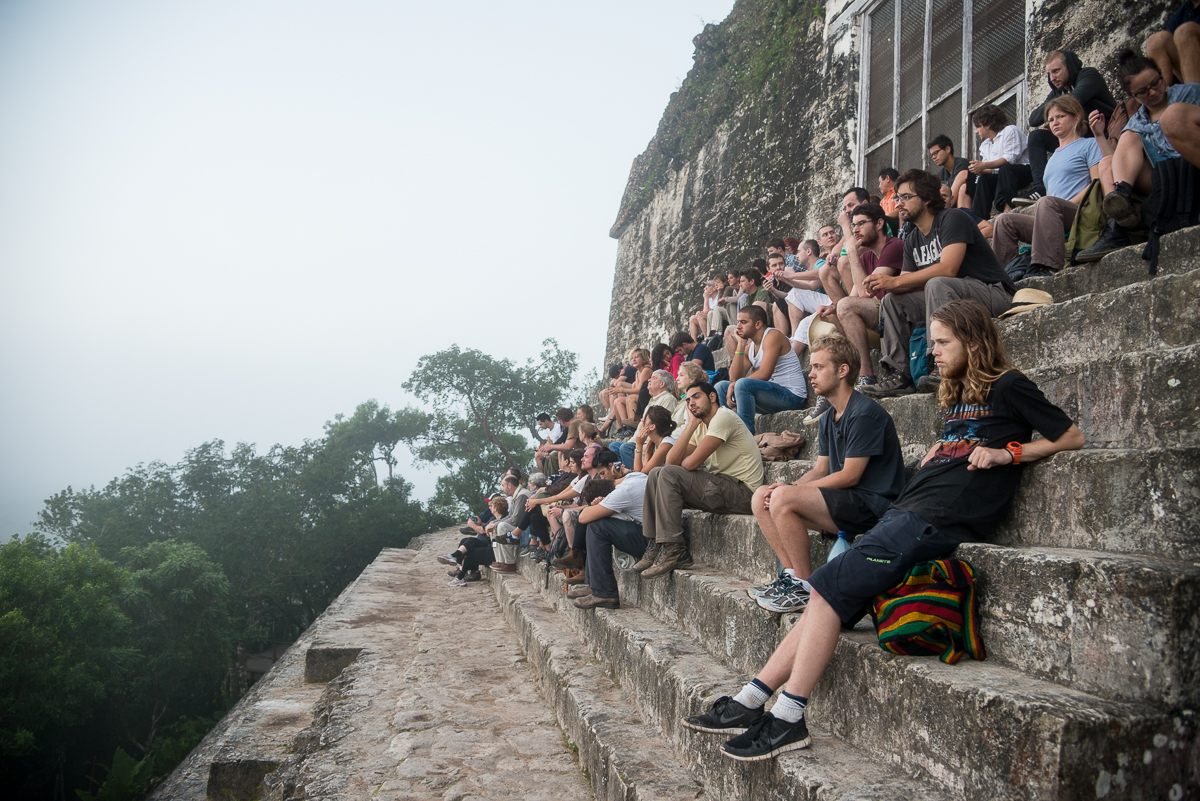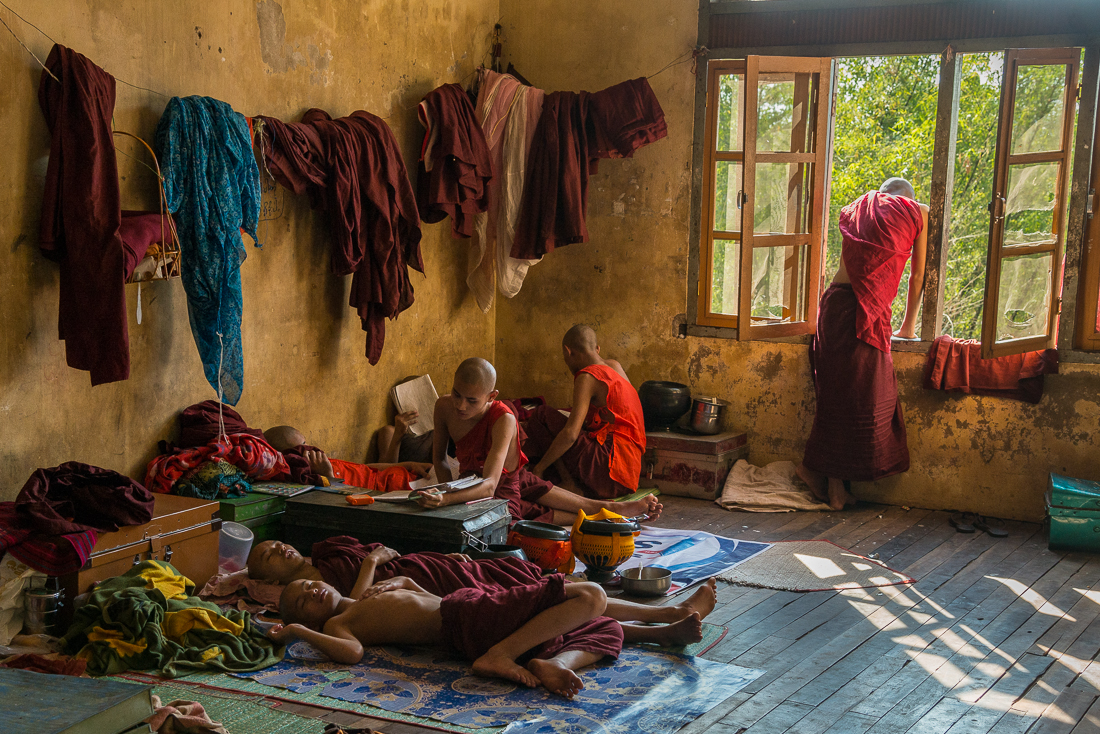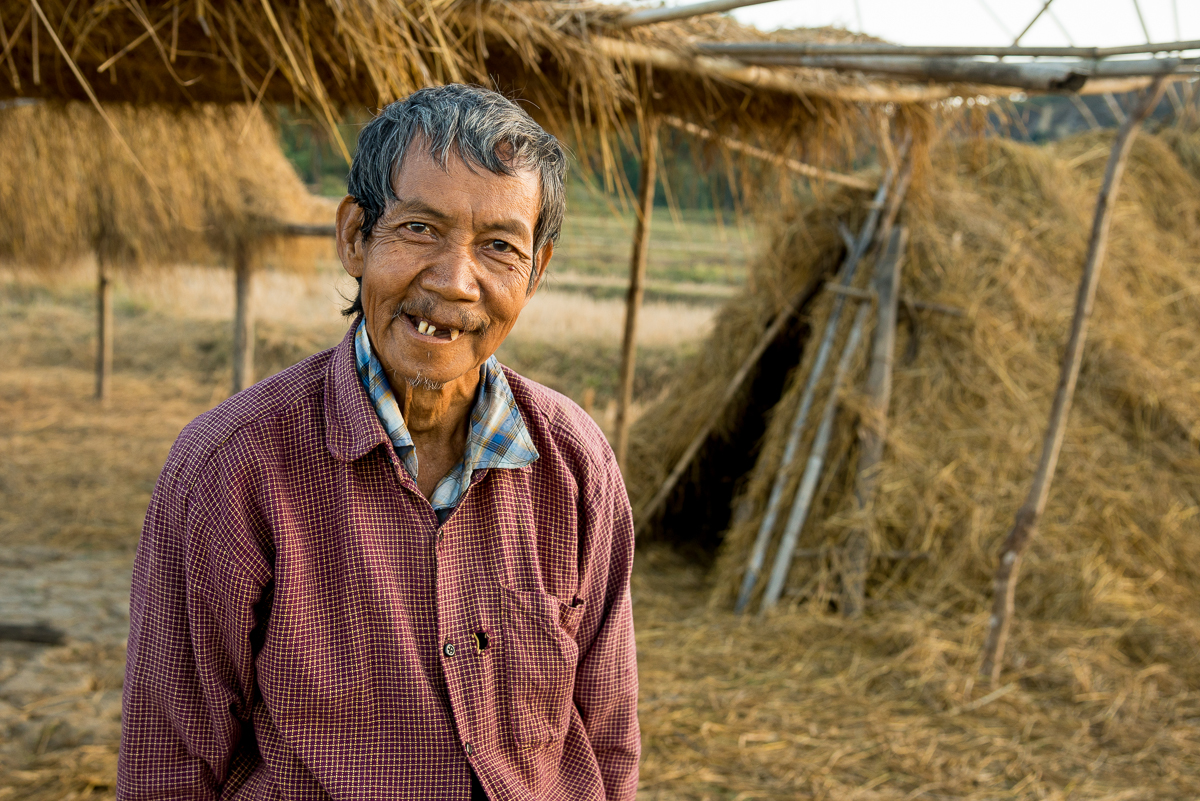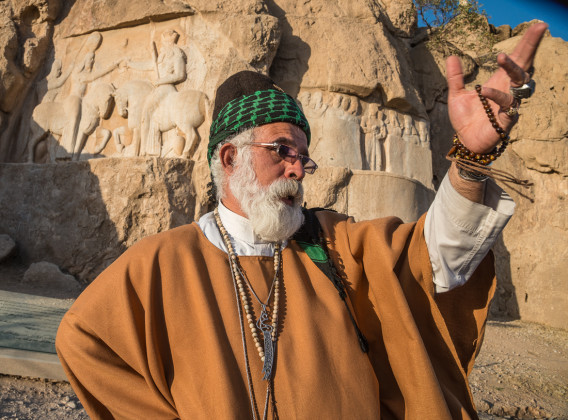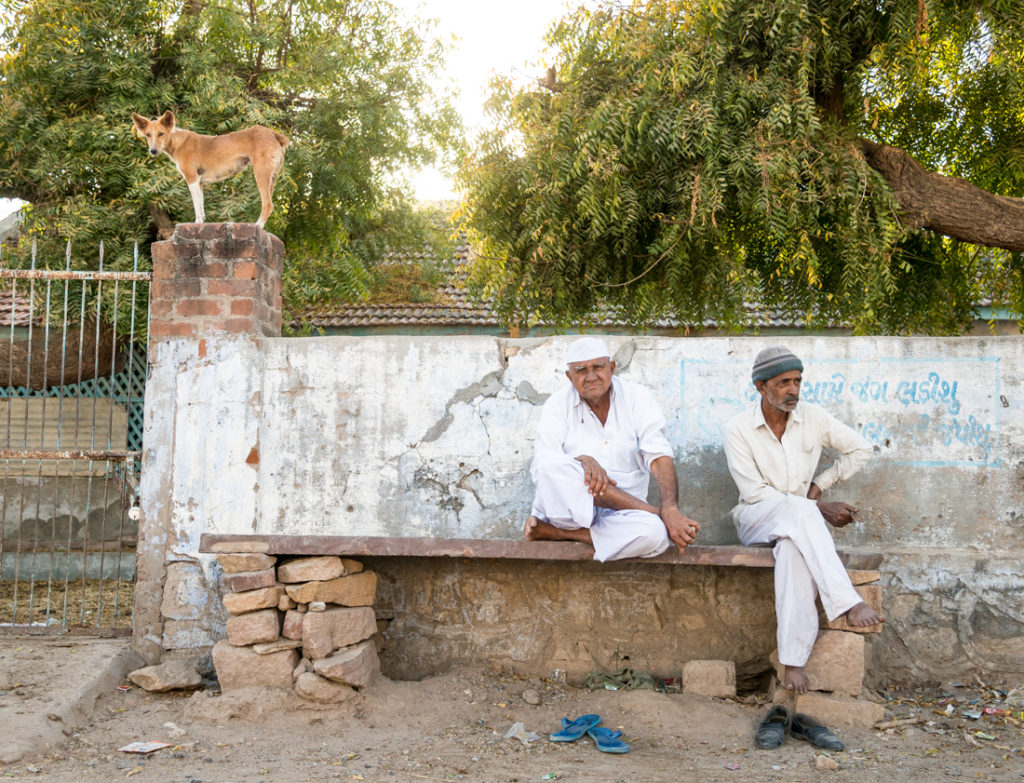One last post (#7) from the Chindwin River in Burma. The first was here.
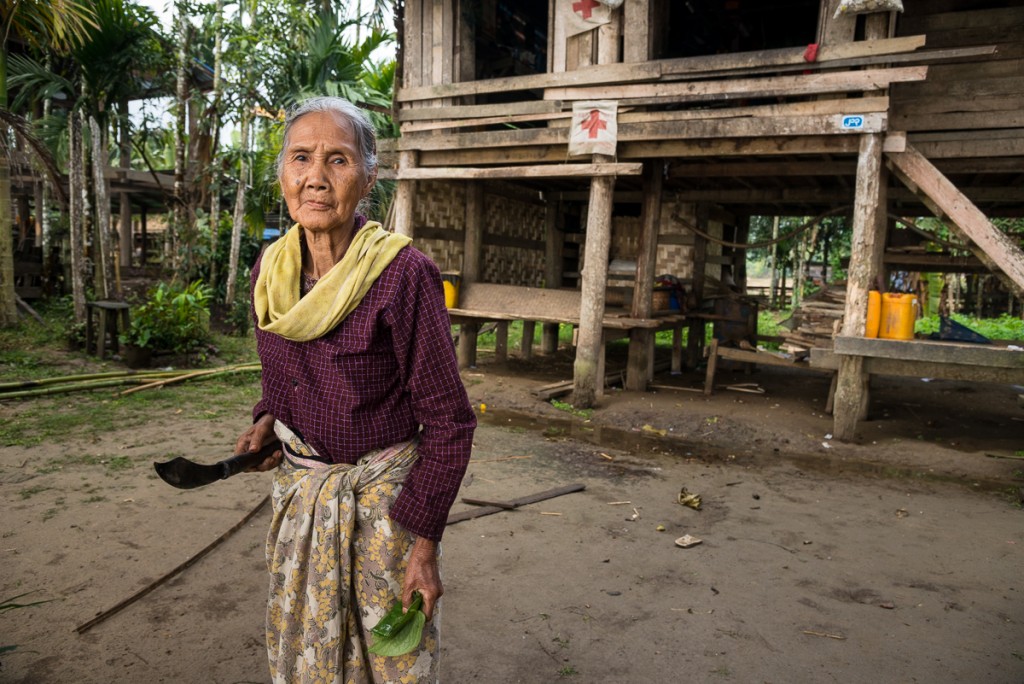
Don’t let that knife scare you. This lady is making a mouthful of Burma’s version of chewing tobaccco: betel nut. It’s a big reason so many Burmese have terrible teeth. The house behind her was a WWII Red Cross outpost.
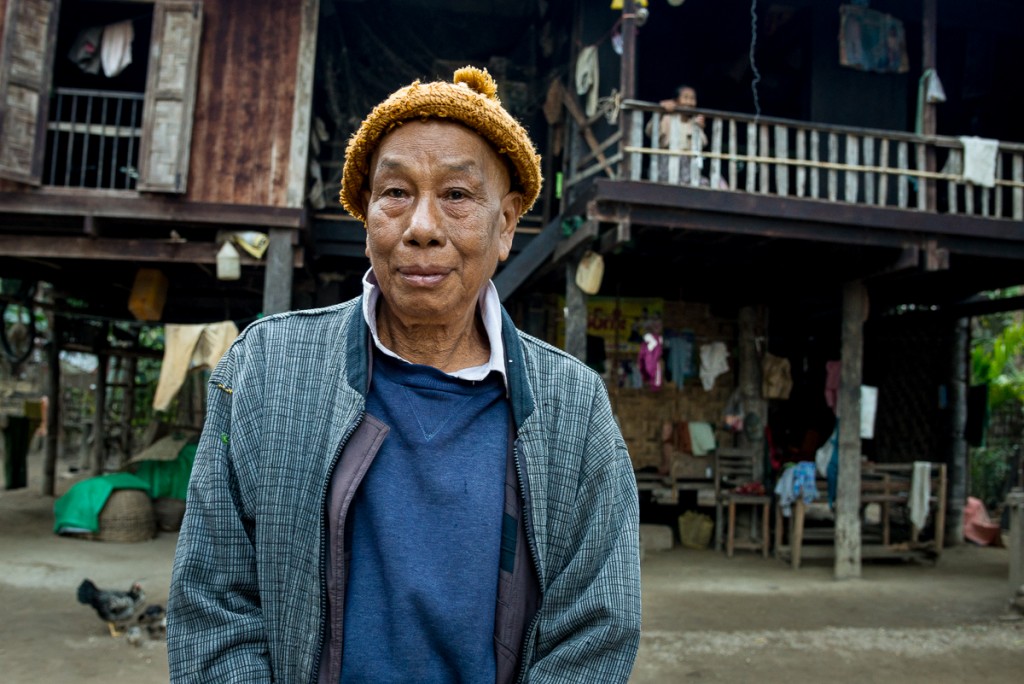
A couple of hundred people followed us around in the village of He Hlaw. I had a small parade trailing behind me when I spotted this eighty-something old man in his own front yard. That’s his very bashful wife hiding behind the balcony rail.
* * * * *
I’m sure if I’d given it any thought, I’d have assumed that most cheap fuzzy pajamas were made in China or Thailand or Bangladesh or somewhere like that, so maybe I shouldn’t have been surprised that folks in Burma’s rural Chindwin River region (surrounded by those nations) might have them. Still, I’d never have guessed that colorful fuzzy fleece PJs – some with characters like Sponge Bob, Angry Birds, and Hello Kitty –would be popular all-day everyday wear for school, church, chores and socializing.
Strangely, fuzzy polyester pajamas decorated with video game mascots were among the most modern things you’d see in a place where people cook on campfires and transport things around town by oxcart. Life on the Chindwin mixes a handful of modern advances into a setting with a few elements of the early 1900s and several aspects not much different than they were hundreds of years before. Several towns had an electric generator – but usually only for a few lights at the monastery and maybe a handful of houses (nobody seemed to have any sort of home appliances). In some areas, there were motorbikes in town. Diesel motors chugged up and down the river constantly. Areas of the river that were near roads or big towns had cell phone service (alas: Burmese networks that did not communicate with my TMobile phone). Most towns had a small store of some sort – sometimes with a half dozen cans of warm Coke or Sprite (alas: not Diet Coke) in inventory.
If you look around, you actually see a lot of written English — presumably a holdover from 120 years of British occupation. Several brands and logos (alcohol, packaged food, soap) were in English. We saw school kids reciting (for us) the English alphabet and even writing simple stories in English. Still, hardly anyone could speak more than a word or two (Hello, goodbye, thank you) of English. I made the mistake of trying to speak some English to a schoolteacher who I had just watched teaching the English alphabet to her kids – she understood nothing. Though we regularly saw English on the walls of schoolrooms all over the Chindwin, we met no more than a handful of people there who were at all conversant in English.
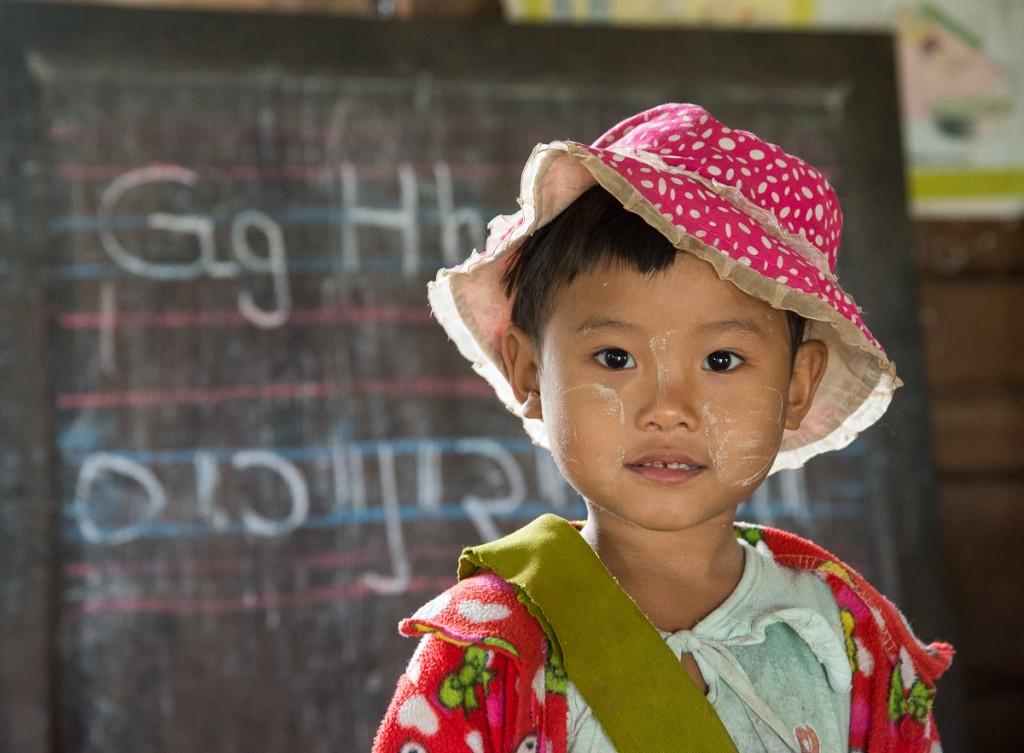
English ABCs, fuzzy PJs, and thanaka facepaint in the one-big-room grade school in the Shan village of Heinsun.
(Coincidentally, I read an article in the Economist this week on almost this exact topic. It focused on Mexico and China, but the issue was that despite years of written classwork aimed at teaching English, very few students can actually speak any English, mostly because none of their teachers can actually speak English.)
One conspicuous remnant of ancient times in Burma is thanaka — a beige paste made from ground-up tree bark and worn as a face paint. It can be a sunscreen spread over the entire face, or a decorative cosmetic applied in patterns. It’s everyday wear for lots of women and kids, and young, unmarried men.
Some thanaka (and PJ) examples:
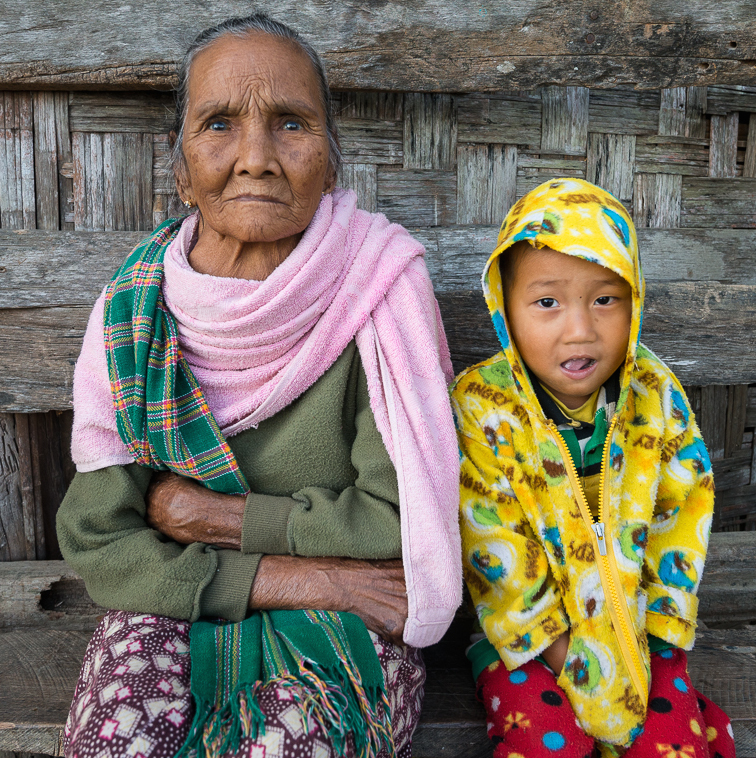
Yellow Angry Birds PJs. His grandma is wearing an inside-out green sweatshirt, and a pink towel as a fashion item.
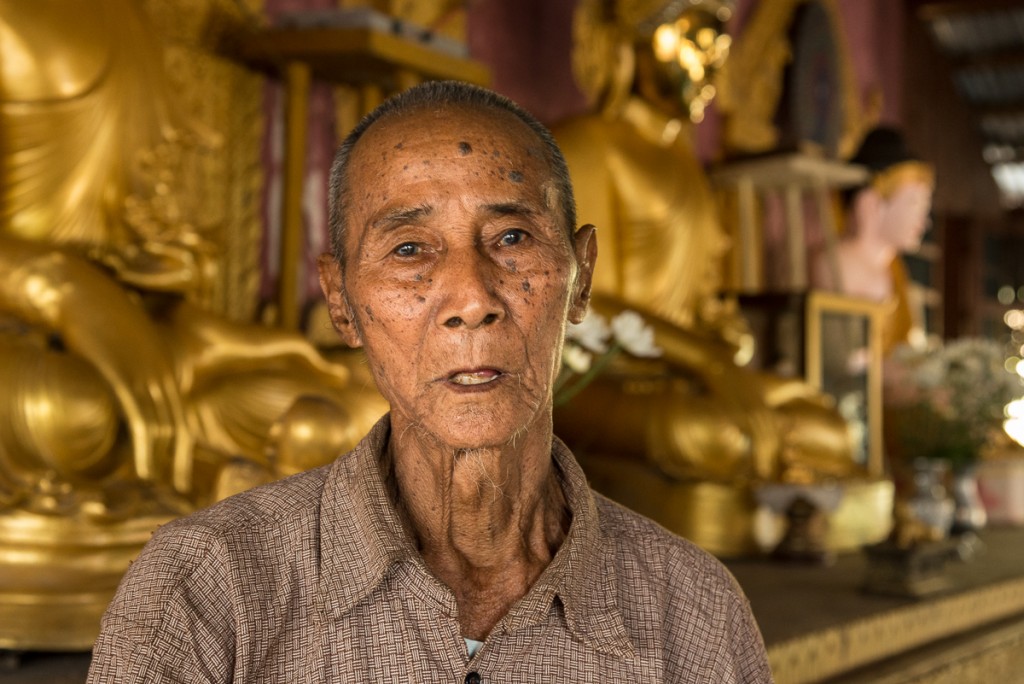
Another outside force that changed the area was World War II. An elder in He Hlaw village showed us a Buddha statue that had been damaged in WWII bombing, and introduced us to this old fellow who had fought in the war. I had to ask: Who had bombed the village? And which side did the old guy fight for? The Allies bombed it, after Japan had invaded and taken over most of Burma. And the old man had fought on both sides, switching (maybe twice?) as control of the area shifted from British to Japanese to British.
What I saw on the Chindwin echoed what I’d seen before — in Bolivia, Guatemala, even rural Cuba. People on the Chindwin live very modestly, in conditions that we as American would find impermissible. Their homes are made of sticks or bamboo; most have no lights and none have air conditioning or appliances. I don’t recall seeing anyone with eyeglasses and none of the communities had doctors. Many have no more than a couple of changes of clothes. They sleep mostly on very-thin mats on wooden floors. If American children were growing up in such conditions, the State would probably put them into foster care. If groups of American adults were living that way, they’d take to the streets in angry protest. But the people of the Chindwin are happy, proud, dignified and content with their lives. Maybe it’s because they don’t know of anything different or better than their own world, but the fact remains that they surely seem happier than many of the people in far weathier or more advanced areas. They are not bitter; they are kind and welcoming to gawking strangers who arrive toting expensive cameras. They work hard to take care of themselves, their families, and their communities. We tend to assume that these folks need to learn from us about all our great modern advancements; we should learn a few lessons from them instead.
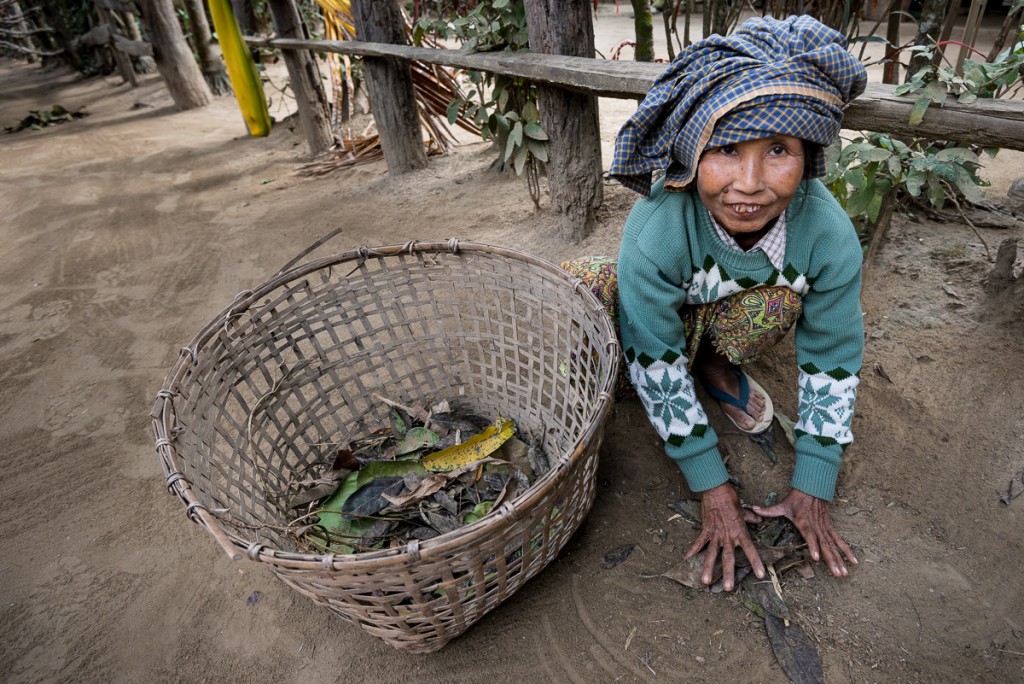
Most larger villages had a grid of wide, street-like paths with homes built along each side of the streets just like a suburban neighborhood. This lady was cleaning up the “street” in front of her house. It’s just dirt, but they sweep it regularly to keep it neat and tidy.
